The Cardboard Placard: An Evolved Art Form For Protesting
After ten days of witnessing a massive global reaction to George Floyd’s killing and realizing that the pandemic is no longer dominating the headlines, I wanted to experience or partake in some small and safe way in this extraordinary call for action. On a sunny Sunday morning, I checked the local New York news to see what was happening in the city that I may want to photograph. There was to be a Meditation Protest at the Brooklyn’s Fort Green Park at 10 am that was both interesting and safe. Actually, I never heard of a meditation protest, so I decided to check it out with my camera and personal protection gear in hand.
When I arrived at precisely 10 am, folks were beginning to enter the park keeping some social distancing bringing with them their blankets, children, pets, and handmade cardboard placards with a protest message for all to see. I was struck by the growing number of this simple yet powerful art form that we are witnessing throughout the country and was pleased to be able to photograph them to my heart’s content. Protest text messages have been a mainstay of Contemporary Art, although it has a longer history. Pop artists such as Jenny Holzer and Barabra Kruger and street artists like Banksy and Jean-Michel Basquiat have been using text messages as a form of “art protesting” both the irony and abuses of society. It remains an essential tool for activists who use signs, banners, posters, and, more recently, the cardboard placard to protest. A simple torn piece of cardboard using a marker or pen to awaken in us a much needed societal change…erasing systemic racism.
Deep in my heart as a Latinx, I want this movement to produce the actions that so many protests held since Donald Trump became president have yet to produce ….systemic change for people of color. I want to believe more than ever that these cardboard signs that speak about “Black Lives Matter,” “Stop Police Brutality” and “Silence is Complicit” are part of a revelation and a “Basta Ya” of how we as a nation can no longer endure the pain of inequality without it destroying our humanity.
By 11 am, the park was filling up, and social distancing was not being carried out by many, which concerned me. I mainly used my telephoto lens, which allows me not to get too close to folks. I very much loved the vibe of this peaceful experience. The protest represented folks of all ages, races, and ethnic backgrounds, including many interracial couples. The organizers offered masks, sanitizers, water, and snacks. I accepted a snack but declined the water as I did not want to be tempted to drink where there were clearly no public bathrooms on site. News reporters were present interviewing folks, and there were several photographers and a cameraman recording and taking photos. People did not seem to mind the photo-taking as they lifted their cardboard signs to make a point.
By 1130 am, the organizers stood up, asking for our attention to begin a short and enlightened program. This protest was about self-care and reflection, it was about thinking what’s next, reminding us that protesting was the beginning of a journey towards meaningful change. A young black man read an amazing poem about Blackness that was both positive and empowering. The audience was asked to stand and hold out their hands as reaching to each other for support and then holding their hearts. We were then asked to sit and meditate for 8 minutes and 46 seconds in honor of George Floyd. A moment of silent reflection on what is globally happening and why we are here. Like, many of the other photographers at the site, I was trying to respectfully take photos. It’s only then that you feel the impact of those 8 minutes and 46 seconds, a considerable amount of time to know that this man was dying, pleading for his life, and crying out for his mom. How is this not a lynching?
By 12 pm, the meditation came to an end, and food was offered for those who planned to stay longer. It was time to head back with my memories and photos, reflecting on what more I can do to advocate for systemic change. What has continued to stay with me are those cardboard placards held by children and adults, pasted on walls, fences, and even on strollers. They are part of the “protest art” trend that represents not only an expression of anger but a conduit for change. These cardboard placards have become part of any photographer’s canvas…. recording a moment in time and a place in history that will forever change us.
Click the center of the photos to be able to see the full view.






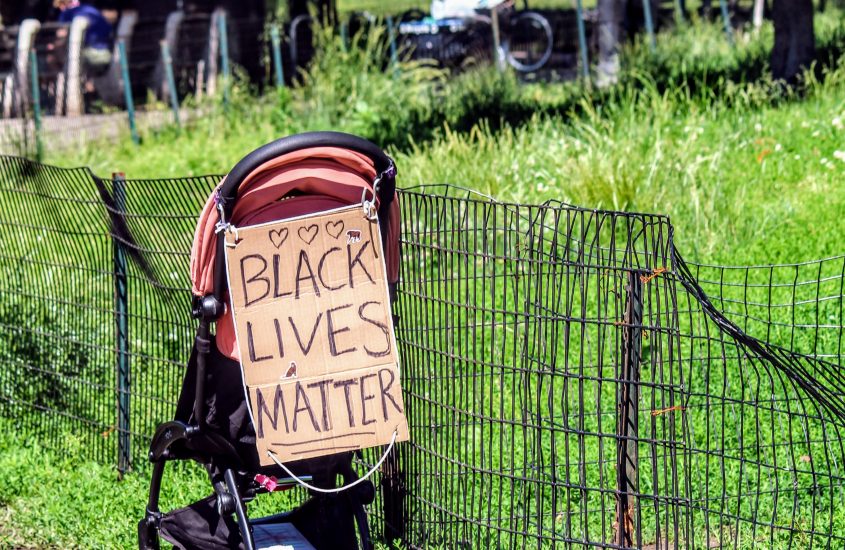
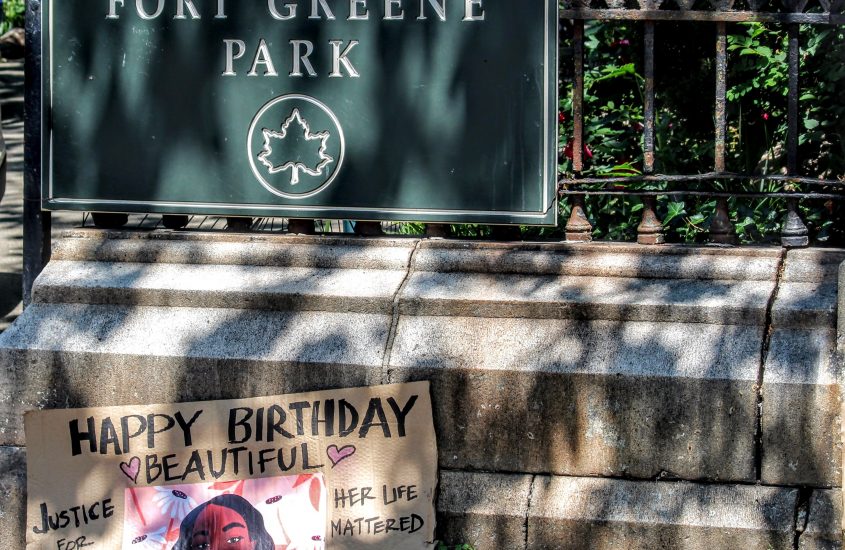
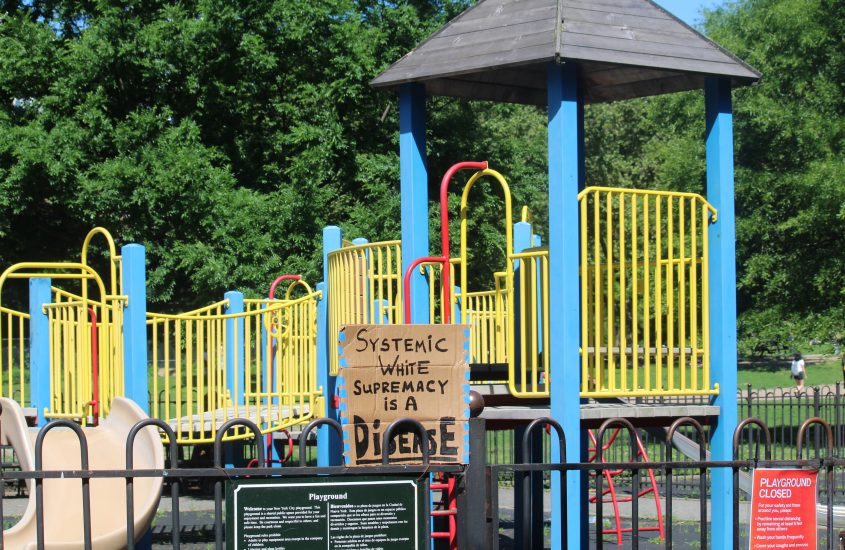
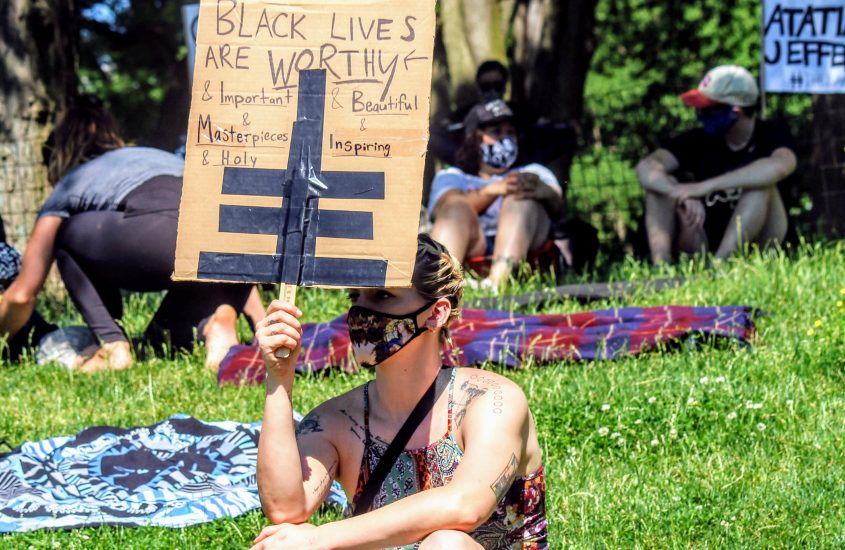
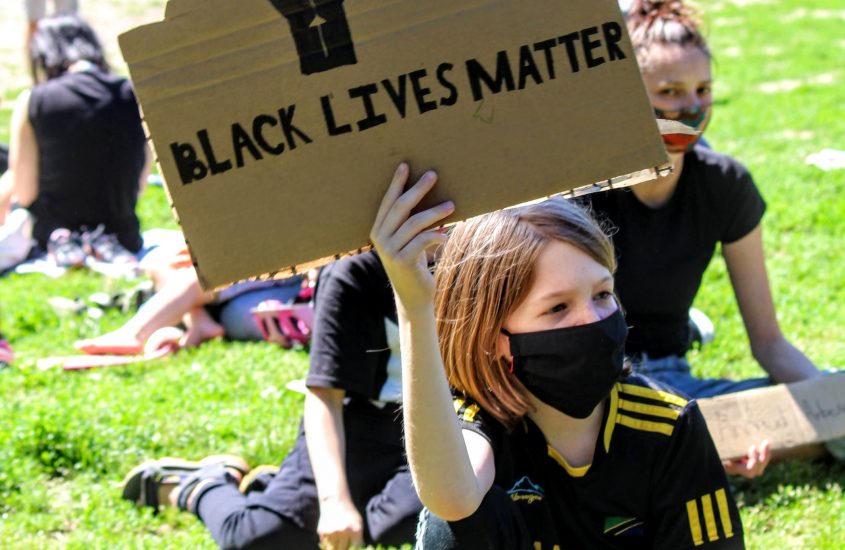
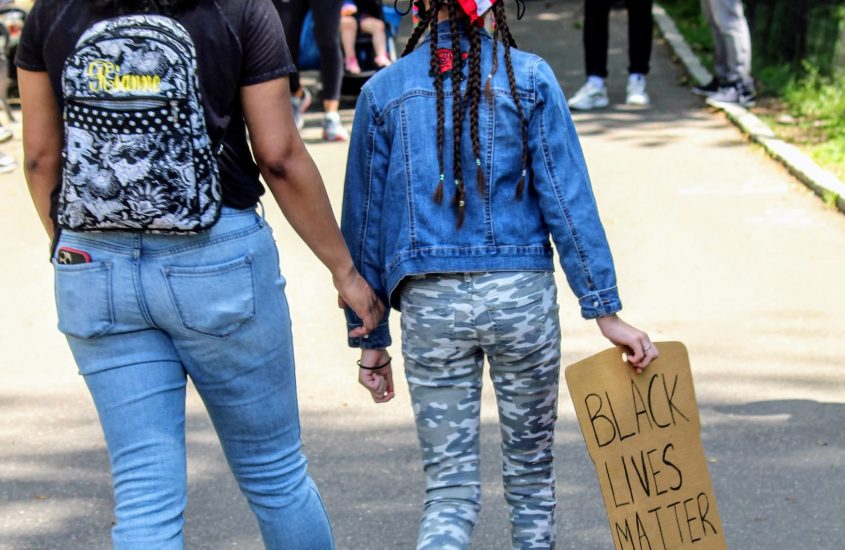
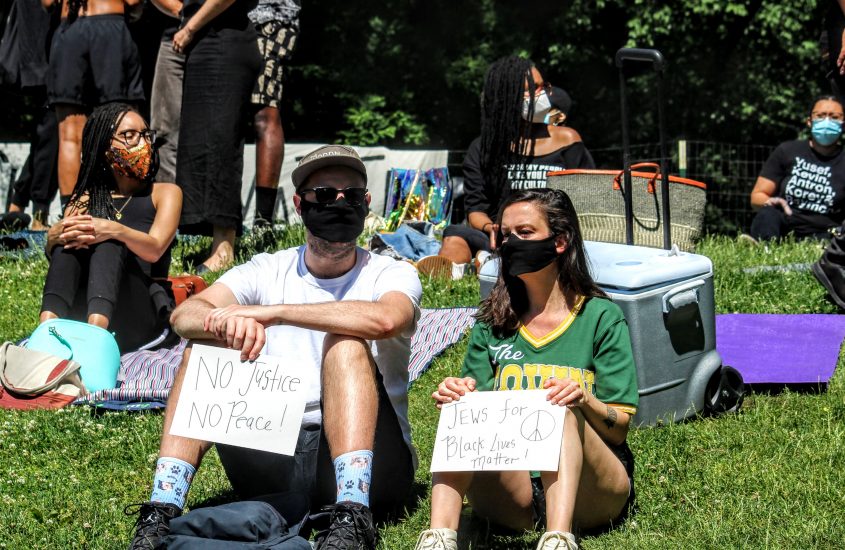
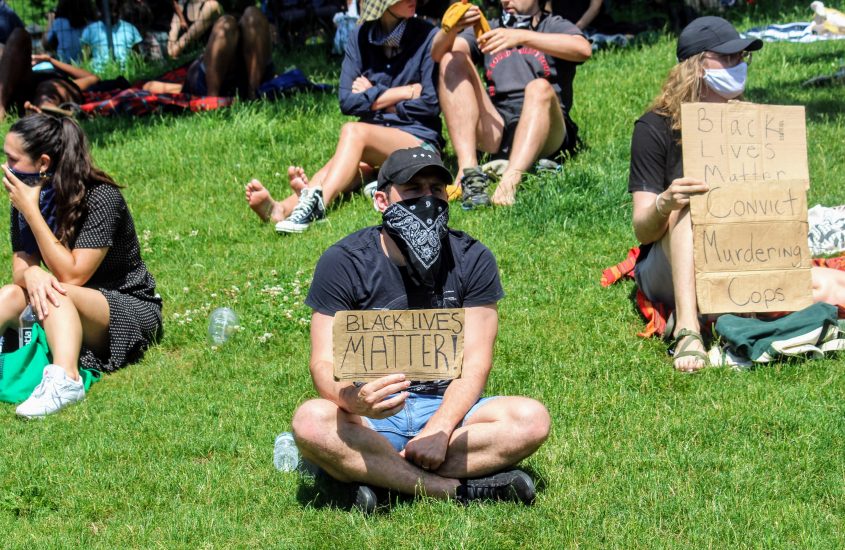
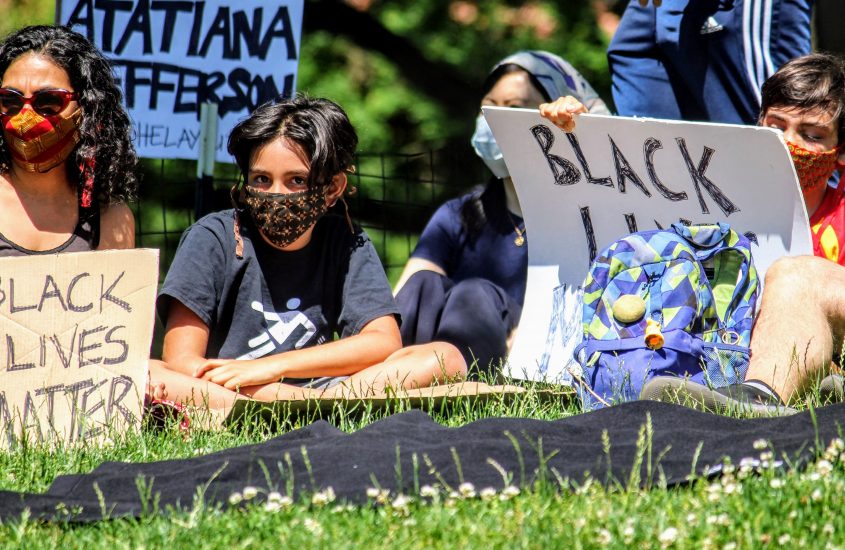
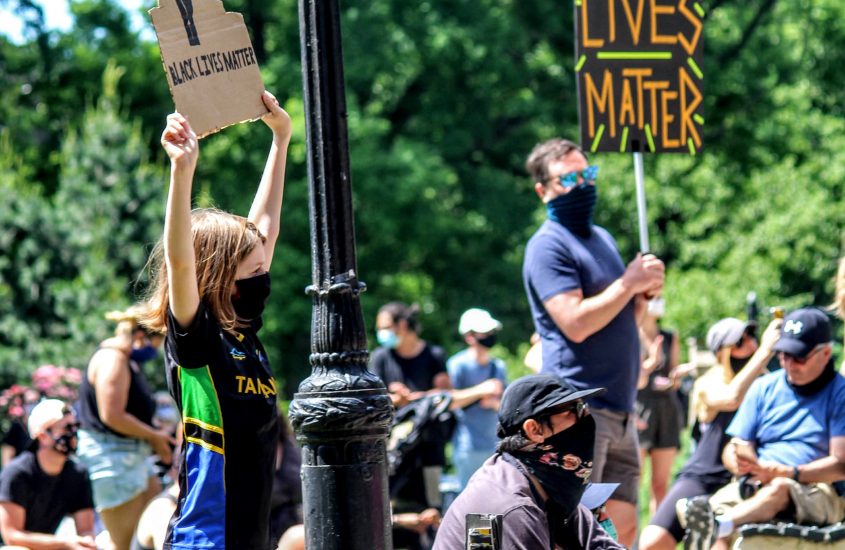
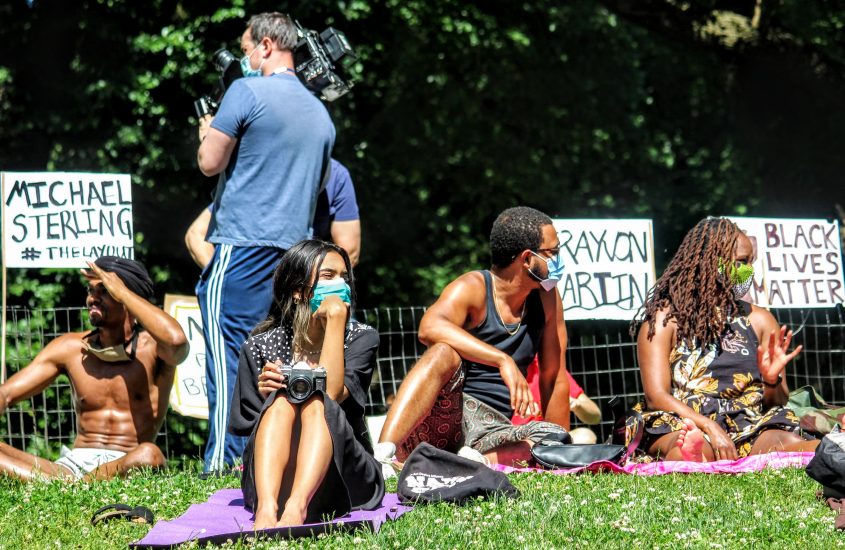
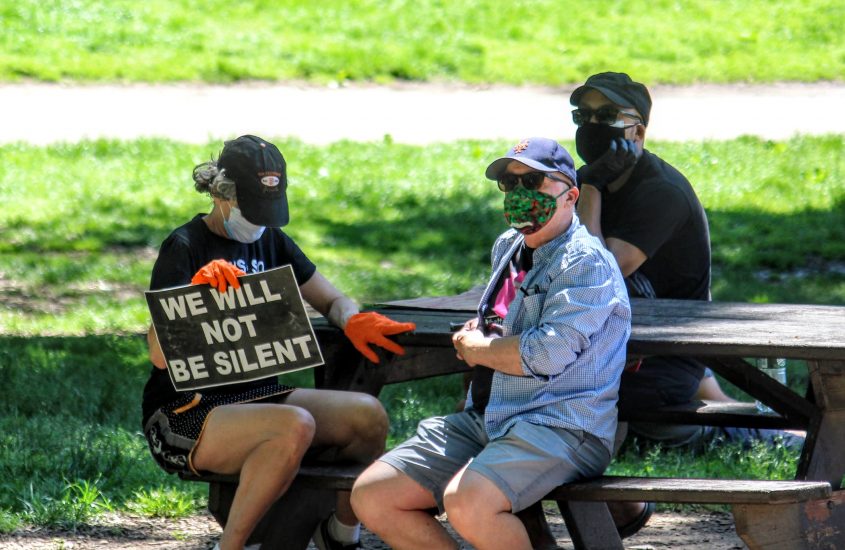
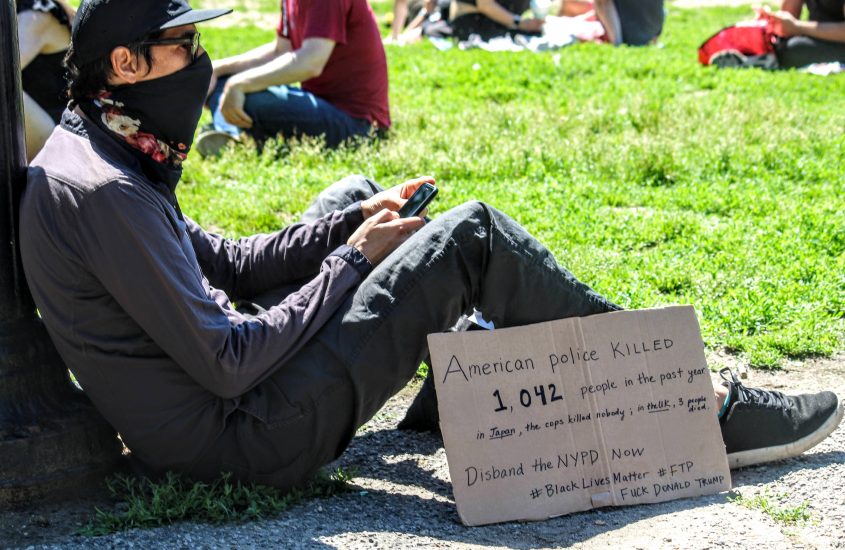
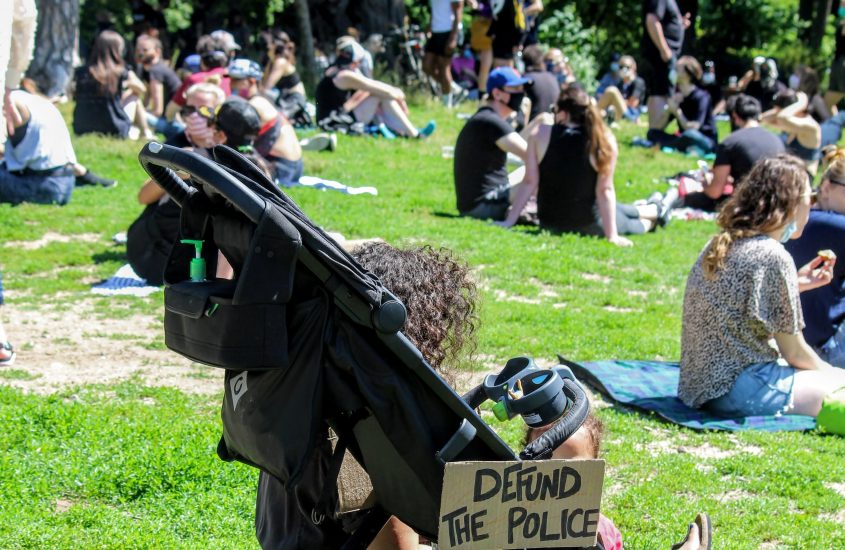
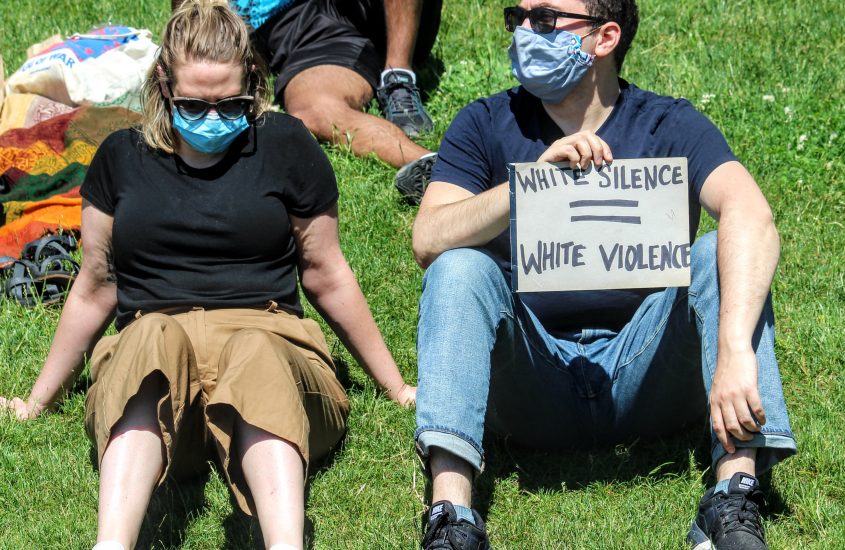
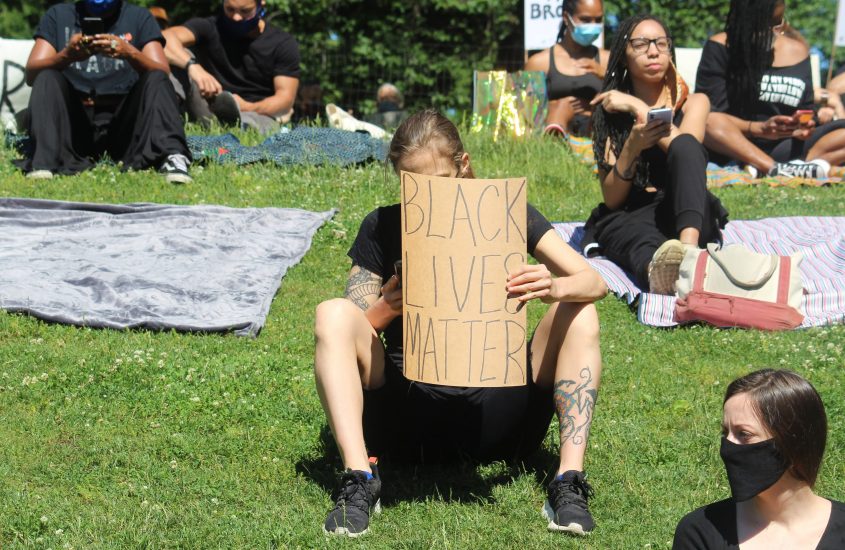
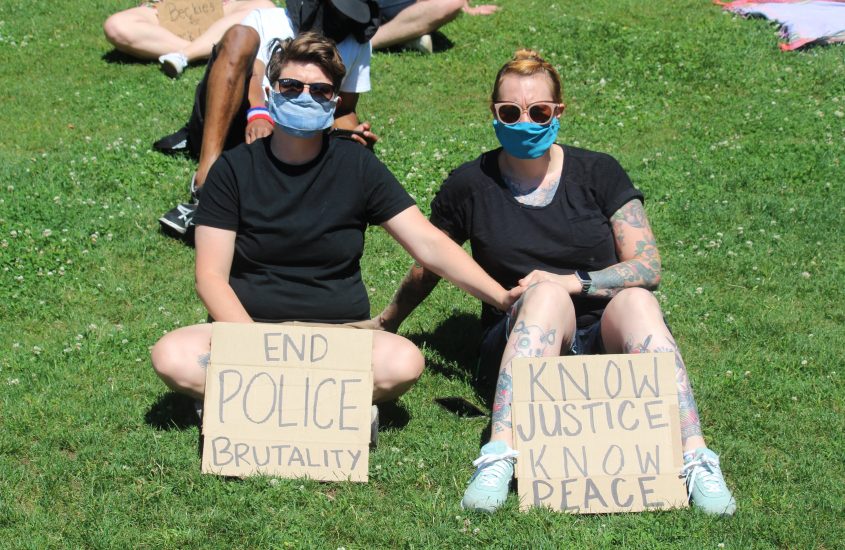
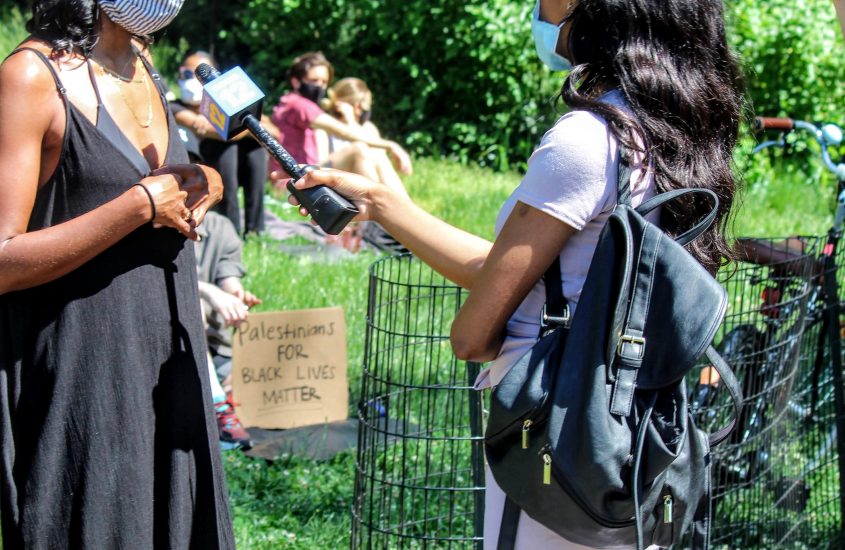
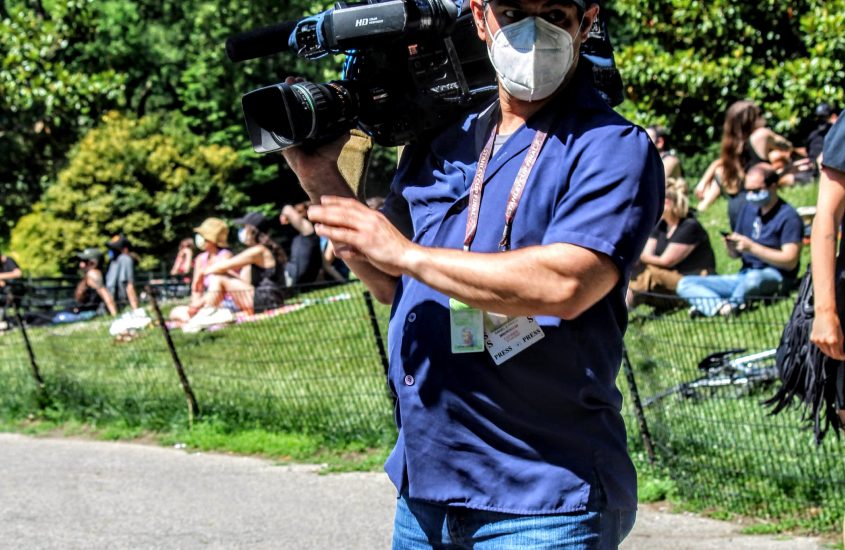
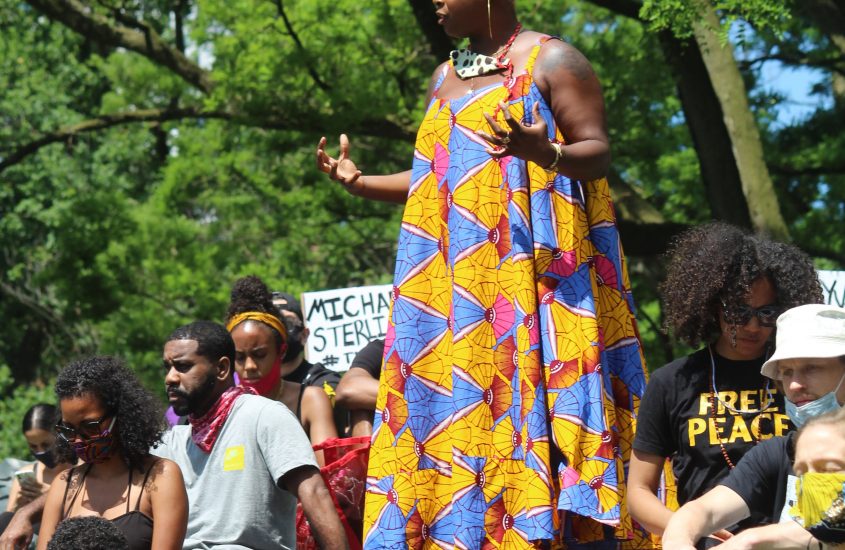
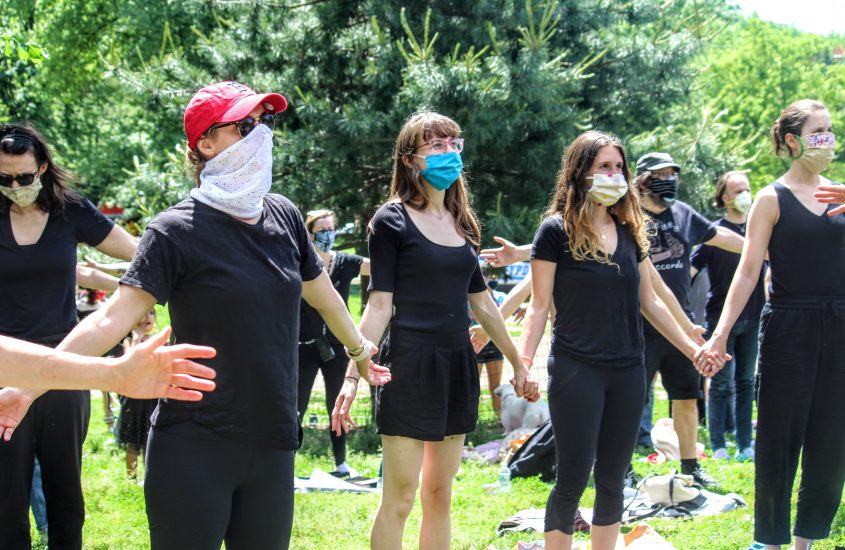
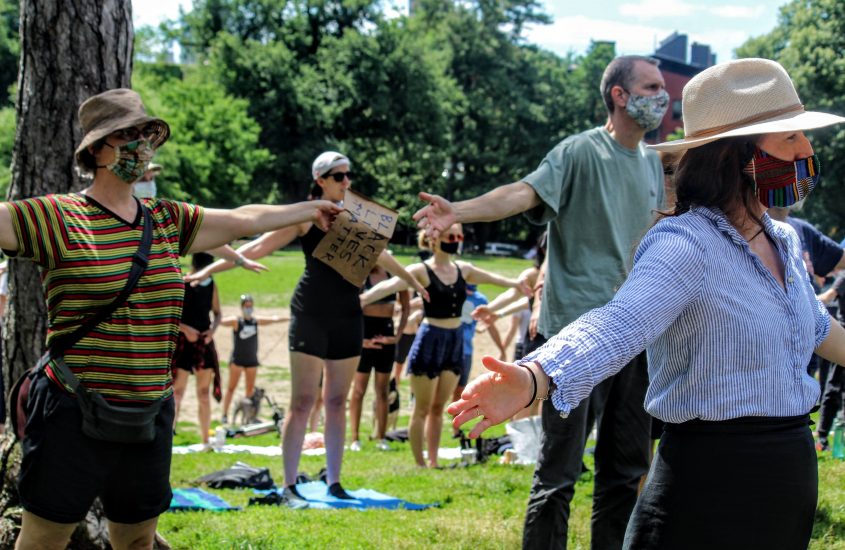
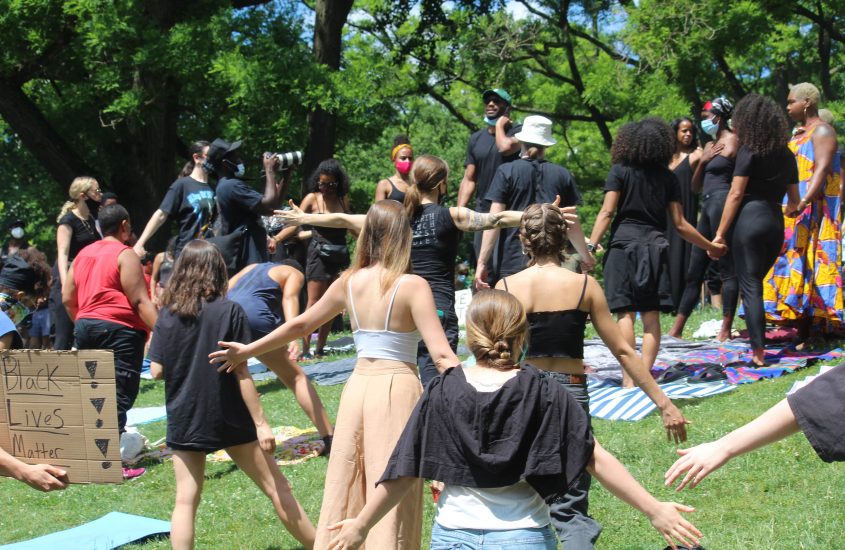
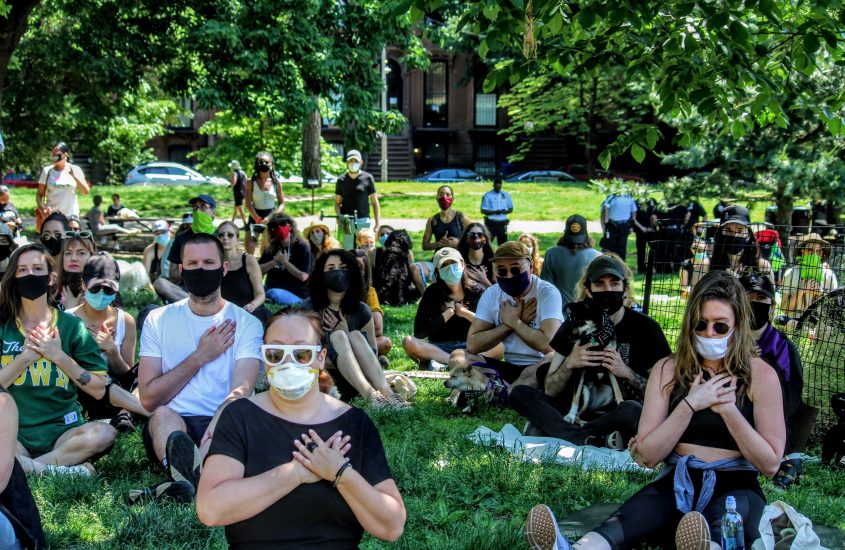
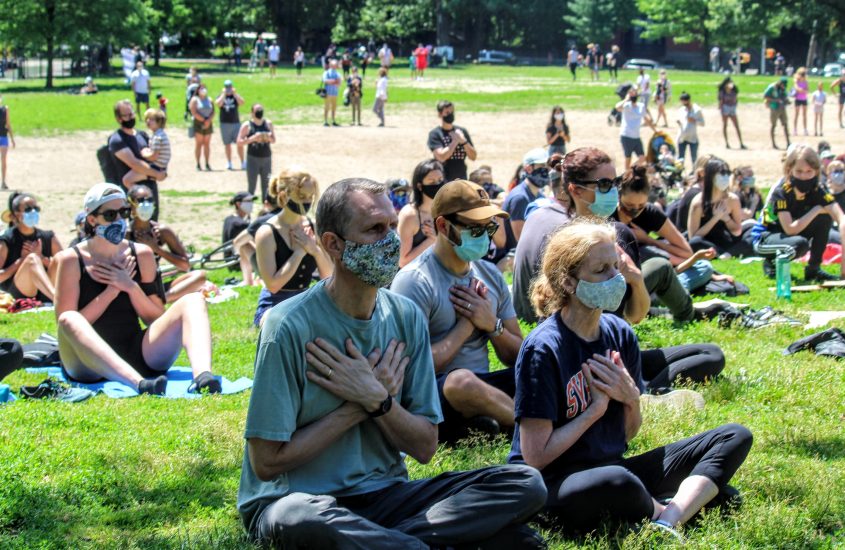
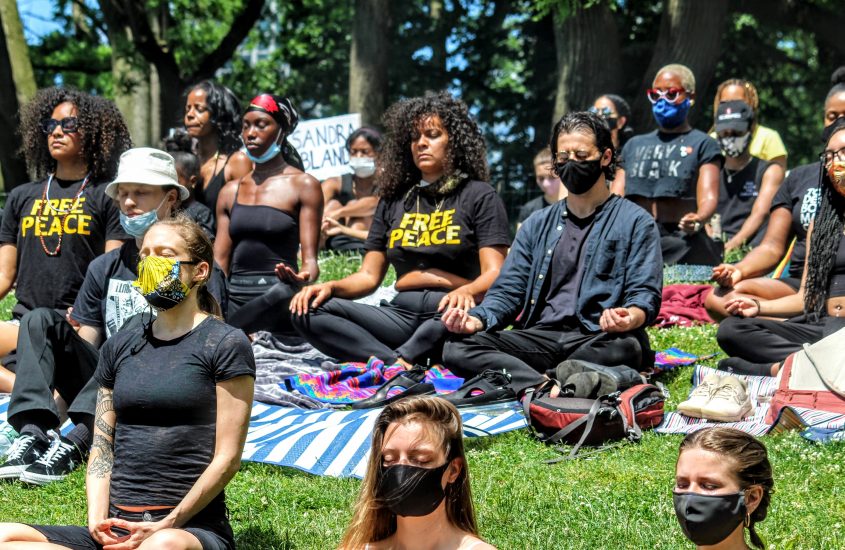
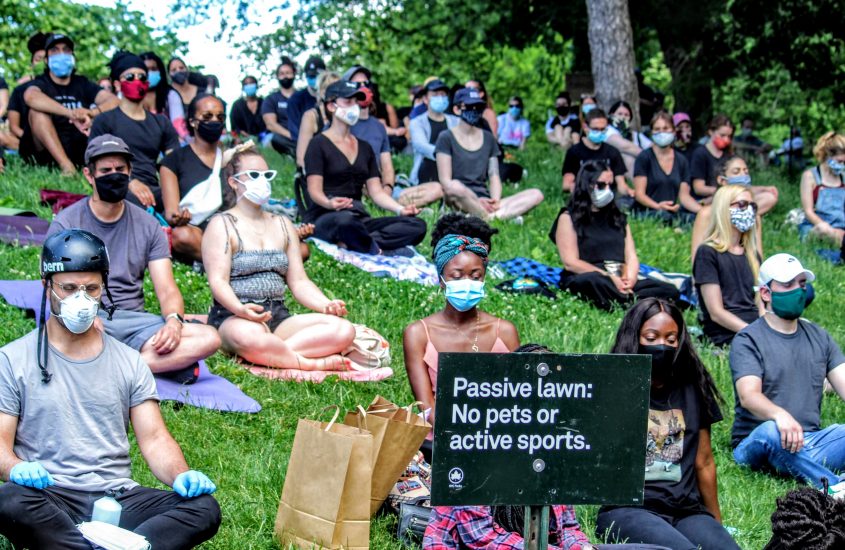
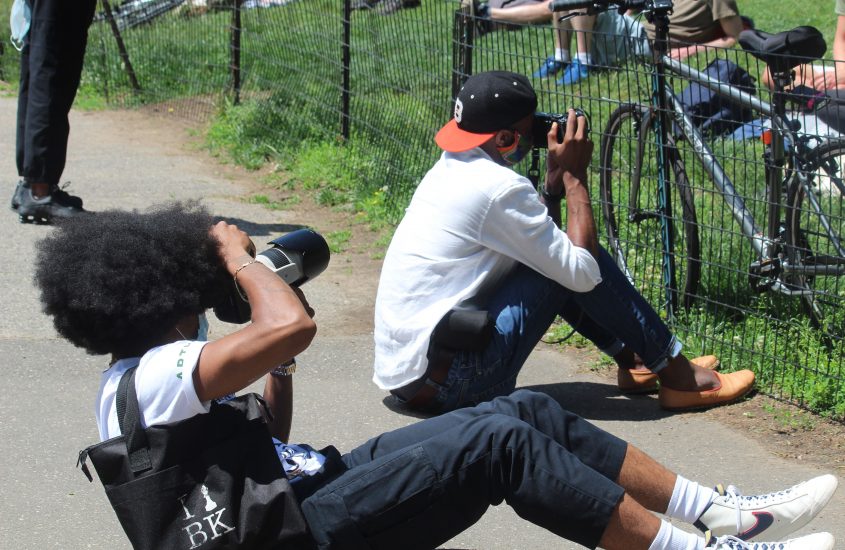
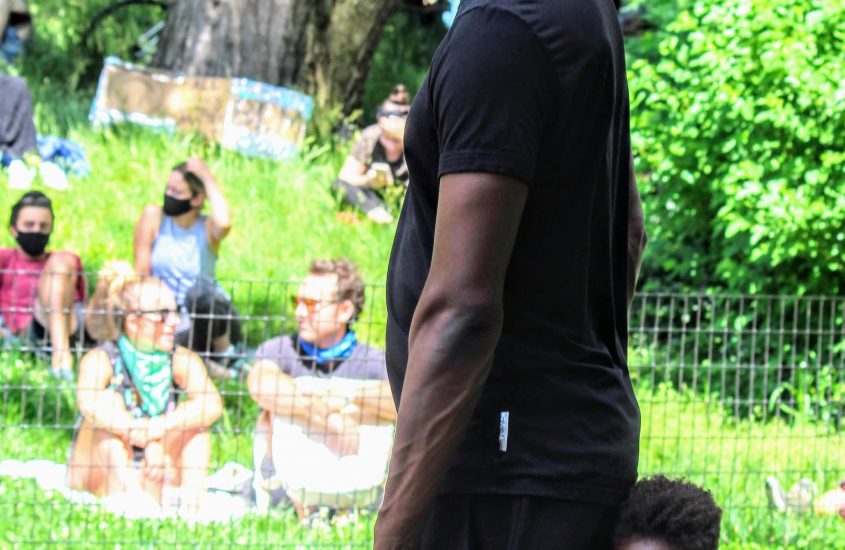




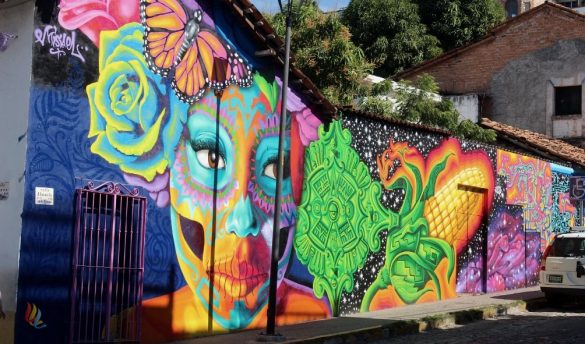
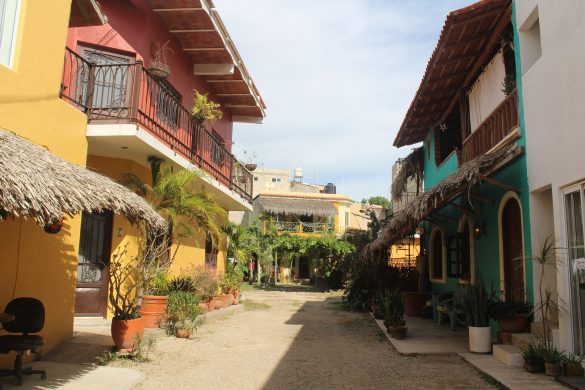
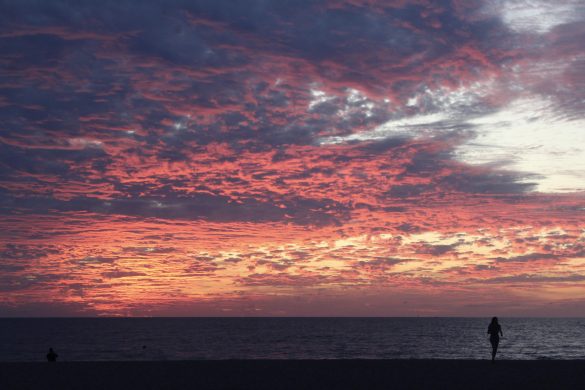
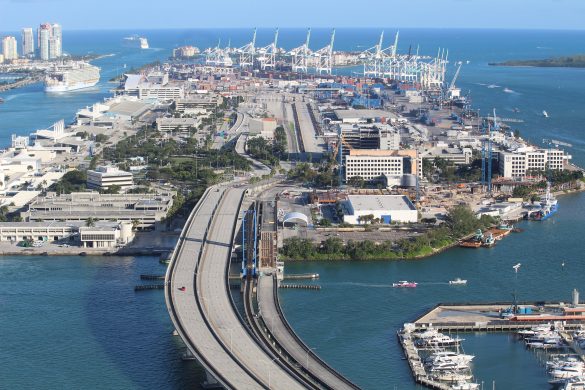
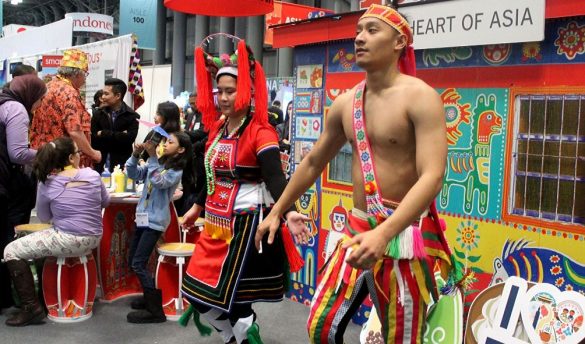

Lydia Williams
Thank you for sharing this experience. My heart has a permanent ache for the lack of humanity in these murderers.
On Saturday another murder.
Having trouble feeling hopeful.
Just pain where hope once lived.
LimitedLimitless
Going on three weeks of protesting and there already some changes taking place but I would agree we need a C change of a significant size.
Willie
Love the idea & pic
LimitedLimitless
Thanks
Jami Keefer Daye
Eine Person, die im Wesentlichen dazu beiträgt, ernsthafte Beiträge zu verfassen, die ich angeben könnte. Jami Keefer Daye
LimitedLimitless
thank you
Irving
What’s up colleagues, good piece of writing and nice urging commented at
this place, I am actually enjoying by these.
Have a look at my web site – David
Luz
My brother suggested I might like this website.
He was totally right. This post truly made my day.
You cann’t imagine simply how much time I had
spent for this information! Thanks!
my blog Melodee
Ray
I do not even know how I ended up right here, however I thought this put up was once
good. I don’t know who you are however certainly you’re going to a well-known blogger if you happen to are not already.
Cheers!
My web site :: Geraldine
Nydia
It’s not my first time to visit this site, i am browsing this site dailly and get pleasant data from here all the time.
Feel free to surf to my page … Salvatore
Sean
This blog was… how do you say it? Relevant!! Finally I’ve found
something that helped me. Appreciate it!
my web-site :: Ralph
Chanel
Hi there, I discovered your website by way of Google even as searching
for a similar subject, your website came up, it appears to be like great.
I’ve bookmarked it in my google bookmarks.
Hi there, just was aware of your weblog via Google, and located that
it’s truly informative. I’m going to be careful for brussels.
I’ll appreciate in case you continue this in future. A lot of other people can be benefited from your writing.
Cheers!
Feel free to visit my web-site; Louella
Jeanett
Hello! This is my 1st comment here so I just wanted to give
a quick shout out and say I truly enjoy reading through your posts.
Can you suggest any other blogs/websites/forums that deal with the same subjects?
Many thanks!
Take a look at my web-site – Deandre
Raleigh
Very nice article, just what I was looking for.
Also visit my page; layarkaca21 indoxx1
Miles
Hey! I know this is somewhat off topic but I was wondering if you knew where
I could get a captcha plugin for my comment form?
I’m using the same blog platform as yours and I’m having problems finding
one? Thanks a lot!
My blog indoxxi layarkaca21
Phoebe
I think that what you published was very logical. However, think about this, what if
you added a little content? I mean, I don’t want to tell you how to run your
website, but what if you added a title that makes people want more?
I mean The Cardboard Placard: An Evolved Art Form For Protesting – Limited Limitless Living is kinda vanilla.
You should look at Yahoo’s front page and see how they create news headlines to grab viewers to click.
You might add a video or a pic or two to
grab readers excited about what you’ve got to say. In my
opinion, it could bring your blog a little bit more interesting.
Here is my web blog; [https://penzu.com/p/e82dd2c5 indoxxi layarkaca21
Rocky
An impressive share! I’ve just forwarded this onto a friend who was conducting a little homework on this.
And he in fact ordered me breakfast due to the fact that I found
it for him… lol. So allow me to reword this…. Thanks for the meal!!
But yeah, thanx for spending time to talk about this subject here
on your site.
Feel free to surf to my page … https://pbase.com/layarkaca21/profile
Tami
Hey very interesting blog!
Here is my web page: daftar judi online
Arleen
Howdy! I’m at work surfing around your blog from my new iphone 4!
Just wanted to say I love reading through your blog and look forward to all your
posts! Carry on the fantastic work!
My web site … Carolyn
Trisha
Do you have any video of that? I’d want to find out more details.
My blog post – Lonnie
Marvin
I was suggested this blog by way of my cousin. I am not positive whether this publish is
written by means of him as no one else realize such
detailed approximately my difficulty. You are amazing!
Thank you!
Also visit my page – judi via pulsa
Savannah
Great article.
my blog judi slot online
Valeria
I couldn’t resist commenting. Well written!
Stop by my website: Gold XL Male Enhancement Pills
Bradley
It’s going to be ending of mine day, however before end I am
reading this impressive paragraph to improve
my experience.
Also visit my web site … layarkaca21 semi
Micki
Hello, I enjoy reading through your article.
I wanted to write a little comment to support you.
My web blog Norris
Augustina
I’m not sure where you’re getting your information, but good
topic. I needs to spend some time learning more or understanding
more. Thanks for fantastic info I was looking for this info for my
mission.
Also visit my site Carmela
Venetta
Oh my goodness! Amazing article dude! Many thanks, However I am encountering
troubles with your RSS. I don’t understand the reason why I am unable to subscribe to
it. Is there anybody else getting identical RSS issues? Anybody who knows the
solution can you kindly respond? Thanks!!
My blog post Ariel
Desmond
Hi! Someone in my Facebook group shared this site with us so I came to
check it out. I’m definitely enjoying the information. I’m book-marking and will be tweeting this to my followers!
Exceptional blog and terrific design.
Also visit my webpage … pokerpulsa188.xyz
Ruby
Unquestionably believe that which you said. Your favorite reason appeared to be
on the web the simplest thing to be aware of. I say to you,
I definitely get irked while people think about worries that they
plainly don’t know about. You managed to hit the nail upon the top and defined out
the whole thing without having side-effects , people can take a signal.
Will probably be back to get more. Thanks
Here is my site … layarkaca21 film indonesia
Zita
Thanks to my father who shared with me regarding this webpage, this website is genuinely remarkable.
Visit my webpage; download poker online
Onita
I’m curious to find out what blog system you’re using?
I’m having some minor security issues with my latest blog and I would like to find something more safeguarded.
Do you have any suggestions?
Here is my webpage Darcy
Jayne
Very nice write-up. I absolutely love this website.
Thanks!
Review my blog post; Claudette
Juana
It is truly a nice and helpful piece of info.
I’m happy that you shared this useful info with us.
Please stay us up to date like this. Thank you for sharing.
Feel free to surf to my site: livechat poker pulsa
Patsy
Hello everyone, it’s my first pay a visit at this web site, and post is actually fruitful in favor
of me, keep up posting these types of posts.
Here is my page slot deposit pulsa
Lynne
Remarkable things here. I am very glad to see your post.
Thank you a lot and I’m looking ahead to contact you.
Will you kindly drop me a mail?
Look into my web site sabung ayam s128
Mel
Spot on with this write-up, I actually think
this site needs much more attention. I’ll probably be returning
to read through more, thanks for the information!
my site: layarkaca21 lk21 indoxxi
Claudio
naturally like your web-site but you need to check the spelling on several of your posts.
Several of them are rife with spelling problems and I to find it very bothersome to inform the reality then again I will definitely come back again.
Also visit my web-site – layarkaca21 lk21
Margherita
It’s remarkable to go to see this site and reading the views of all friends regarding
this post, while I am also zealous of getting know-how.
my webpage http://www.kuliner-indo.com
Carmella
I think the admin of this web page is really working hard for his site, for the reason that
here every data is quality based material.
Also visit my web page ayam aduan
Zella
What i don’t realize is in truth how you are no longer really a
lot more well-appreciated than you may be now. You’re very intelligent.
You realize therefore considerably in relation to this subject, made me in my
view imagine it from so many various angles.
Its like men and women aren’t interested until it’s one thing to accomplish with Girl gaga!
Your personal stuffs outstanding. At all times deal with it up!
Feel free to surf to my blog post; download s128
Juliane
Thanks designed for sharing such a pleasant thinking,
piece of writing is fastidious, thats why i have read it entirely
Feel free to visit my web-site pokerpulsa128.xyz
Lovie
I’ve been surfing on-line greater than three hours as of late, but
I by no means found any attention-grabbing article like yours.
It is pretty price enough for me. Personally, if all
web owners and bloggers made excellent content material as
you probably did, the internet will probably be much
more useful than ever before.
Here is my webpage layarkaca21 indoxx1
Kit
My relatives always say that I am killing my time here at net, except I know I am getting knowledge everyday by reading such fastidious articles or reviews.
Also visit my site: Clayton
Mikki
Its like you read my mind! You seem to know a lot about this, like you wrote the book in it or something.
I think that you could do with a few pics to drive the message
home a little bit, but instead of that,
this is excellent blog. An excellent read. I’ll
certainly be back.
Here is my web page: bantenglive.net
Staci
It is truly a nice and useful piece of info. I am satisfied that
you simply shared this helpful info with us. Please keep us up to
date like this. Thank you for sharing.
Here is my webpage – login sv388
Arnulfo
Nice replies in return of this matter with real arguments and describing all on the topic of
that.
My site – pokerpulsa303.xyz
Melisa
You can speak to Begambleaware.org non-quit by utilizing
their website.
Review my web blog :: Pasquale
Anderson
Heya i am for the first time here. I found this board and
I find It really useful & it helped me out much. I hope to give something back and aid others
like you aided me.
Also visit my web blog … layarkaca21 lk21
Adrianne
Hi there! This is kind of off topic but I need some advice from
an established blog. Is it very hard to set up your own blog?
I’m not very techincal but I can figure things out pretty fast.
I’m thinking about setting up my own but I’m not sure where to start.
Do you have any points or suggestions? Thanks
Take a look at my web blog – layarkaca21 indoxxi
Siobhan
My brother recommended I might like this web site. He was totally right.
This post truly made my day. You cann’t imagine simply
how much time I had spent for this information! Thanks!
My page layarkaca21 indoxx1
Herman
If you would like to get a good deal from this piece of writing then you have to apply such
methods to your won web site.
Check out my webpage – https://adubantengonline.com/
Charissa
Conversely, the site delivers reside soccer action from all more
than the globe to desktop, mobile, and tablets.
my web page: Maybelle
Karina
There was a sense of a lottery, a roulette
wheel that would come about.
Also visit my page Shellie
Deanna
They wrote code and built betting robots that could automate the bets for them.
Feel free to visit my web page :: Beau
Tasha
Betting odds comparison solutions are available absolutely free of charge all over the net.
Also visit my site :: Thao
Vida
Great work! This is the kind of information that are meant to be shared
around the net. Shame on the seek engines for
no longer positioning this submit upper! Come on over and
discuss with my web site . Thank you =)
Feel free to surf to my webpage … layarkaca21 semi
Lee
Hi all, here every one is sharing these know-how, so it’s pleasant
to read this web site, and I used to visit this website
daily.
Here is my web-site :: layarkaca21 indonesia
Brianna
Attractive component of content. I simply stumbled upon your weblog and in accession capital to say
that I acquire actually enjoyed account your weblog posts.
Any way I will be subscribing on your augment and even I success you get admission to consistently rapidly.
My web blog layarkaca21 indonesia
Maple
Admiring the time and energy you put into your website and in depth information you offer.
It’s nice to come across a blog every once in a while that isn’t the same old rehashed material.
Great read! I’ve bookmarked your site and I’m including your RSS feeds to my
Google account.
Look into my web site – Kala
Nathaniel
hello!,I like your writing so a lot! percentage
we communicate more about your article on AOL? I need
an expert on this space to solve my problem. May be that is you!
Having a look forward to peer you.
My web page; Optimal Trim Keto
Chanel
I needed to thank you for this good read!! I absolutely loved
every little bit of it. I’ve got you book marked to look at new stuff you post?
Here is my blog post: Gold Top CBD Gummies Review
Elsie
It’s very straightforward to find out any matter on web as
compared to books, as I found this piece of writing at this web
site.
Feel free to surf to my site – layarkaca21 xxi
Elena
Hi, all is going sound here and ofcourse every one is sharing information, that’s really excellent, keep
up writing.
Look into my web page – layarkaca21 indoxxi
Cathern
Why users still use to read news papers when in this technological globe the whole thing is
available on net?
Here is my site – Hairoxol Forte Serum
Cassandra
This can be a bank, e-wallet or some other sort of processing enterprise.
Here is my web site … Monty
Leoma
Frank Gore reached a milestone on his final carry of the game
— and possibly of his career.
my webpage; Williams
Celina
Hi there friends, how is the whole thing, and what you would like to say regarding this paragraph, in my view its really remarkable in support
of me.
my site … agen s128
Georgia
Hey! This is kind of off topic but I need some help
from an established blog. Is it very difficult to set up your own blog?
I’m not very techincal but I can figure things out pretty fast.
I’m thinking about making my own but I’m not sure where to start.
Do you have any tips or suggestions? Thank you
my website: http://tintuccuocsong247.net/
Kurtis
What’s up, I desire to subscribe for this webpage to get newest
updates, so where can i do it please help out.
My web site: ayambali.net
Ina
In this guide, we’ll explore all the components of on-line betting
on sports.
my webpage – Maximo
Mason
Hello my friend! I want to say that this article is amazing, great written and come with approximately all important infos.
I’d like to peer extra posts like this .
Check out my web-site; slot deposit pulsa
Marcel
When I originally commented I clicked the “Notify me when new comments are added”
checkbox and now each time a comment is added I get four e-mails with the same comment.
Is there any way you can remove people from that service?
Thank you!
Here is my webpage: s128 sabung ayam
Keesha
You actually make it seem so easy with your presentation but I find
this matter to be really something which I think I would never
understand. It seems too complex and very broad for me. I’m looking
forward for your next post, I’ll try to get the hang of it!
Also visit my website betayam.com
Kaylee
wonderful post, very informative. I’m wondering why the other experts of this sector do not notice this.
You should proceed your writing. I am sure, you’ve a huge readers’ base already!
Feel free to visit my blog post: True Libido Boost Male Enhancement
Booker
What’s up, after reading this awesome post i am also glad to share my familiarity here with colleagues.
Also visit my web site … Frankie
Leon
Hello! I could have sworn I’ve visited this blog before but after going through many of the posts I realized it’s new
to me. Nonetheless, I’m certainly happy I discovered it and I’ll be bookmarking it and
checking back regularly!
Also visit my website: poker online terbaik
Arlie
This is the most significant consideration for
quite a few sports bettors.
Also visit my blog post … Kate
Stephanie
What’s up to every one, because I am truly keen of reading this webpage’s post to be updated on a regular basis.
It carries nice material.
my web-site https://situsviral.com/
Edna
I have been browsing online more than 3 hours lately, yet I
never found any interesting article like yours. It’s lovely price enough
for me. In my opinion, if all website owners and bloggers made excellent content
material as you probably did, the net might be a lot
more useful than ever before.
Look at my blog: Los Angeles Copyright Lawyer
Sung
Player’s initial hand adds up to six or greater – he/she should
stand and will not get more cards.
My blog: Gilda
Tonya
Hi there, after reading this amazing post i am too delighted to
share my experience here with friends.
My web-site: Erwin
Rigoberto
That is a really good tip particularly to those new to the
blogosphere. Brief but very precise information…
Thank you for sharing this one. A must read article!
Here is my webpage: Hairoxol Forte Review
Rex
The other day, while I was at work, my cousin stole my apple ipad and tested to see if it can survive a forty foot drop, just so she can be a youtube sensation. My
iPad is now broken and she has 83 views. I know this
is entirely off topic but I had to share it with someone!
Also visit my webpage … https://slotpulsa388.xyz/
Leticia
hey there and thank you for your info – I have definitely picked up something new from right here.
I did however expertise a few technical issues
using this web site, since I experienced to reload the website many times
previous to I could get it to load correctly.
I had been wondering if your web hosting is OK? Not that I’m
complaining, but sluggish loading instances times will often affect your placement
in google and could damage your high quality score if advertising and marketing with
Adwords. Well I’m adding this RSS to my e-mail and can look out for much more of your
respective interesting content. Make sure
you update this again soon.
Here is my web site: poker pulsa
Shayne
I’ll immediately clutch your rss feed as I can’t in finding your email subscription hyperlink or newsletter service.
Do you have any? Please permit me realize so that I could subscribe.
Thanks.
my web site – https://ayamsabung.co/
Shela
Hey! Someone in my Myspace group shared this site with us so I came to give it a look.
I’m definitely enjoying the information. I’m bookmarking and will be tweeting this to my followers!
Superb blog and terrific design.
Feel free to visit my web blog bokep
Wallace
Our approved casinos must have the most recent SSL encryption to safeguard
players’ data.
Here is my blog post Cheri
Marshall
When I initially commented I clicked the “Notify me when new comments are added” checkbox and
now each time a comment is added I get three e-mails with the same
comment. Is there any way you can remove people from that service?
Thanks!
Look into my webpage :: deposit slot via pulsa
Kathaleen
There are also on the net slots bonus rounds that can be activated
randomly when playing, offering massive payouts and rewards.
Feel free to visit my blog post; Sam
Dani
Horse racing is 1 of the most prominent sports on several UK betting internet sites.
my web-site – Debbie
Aracelis
Thanks for the good writeup. It in reality used to be a entertainment account it.
Glance complicated to more added agreeable from you! By the way, how could we keep up a correspondence?
Feel free to surf to my blog: Janis
Gina
Good post. I learn something new and challenging on blogs I stumbleupon everyday.
It will always be useful to read through articles from other authors and practice
something from their websites.
My webpage – https://pokerpulsa888.xyz
Percy
Hello there! Would you mind if I share your blog with my twitter group?
There’s a lot of people that I think would really appreciate your content.
Please let me know. Many thanks
My webpage :: AirWatch Smartwatch Price
Minda
I have been browsing online greater than three hours these
days, yet I never found any attention-grabbing article like yours.
It is lovely price sufficient for me. Personally, if all webmasters and bloggers made just right content as
you probably did, the web might be much more useful than ever before.
Review my webpage – agen s128
Agueda
Good post. I learn something totally new and challenging on websites
I stumbleupon every day. It will always be exciting to read articles from other writers and practice a little something from other sites.
Here is my web-site slot via pulsa
Bonita
Terrific article! This is the type of information that
are meant to be shared around the web. Disgrace
on the seek engines for not positioning this
post upper! Come on over and visit my site . Thank you
=)
Review my blog post :: Chas
Katrin
They also offer betting for the NBA, horse racing, and hockey.
Here is my website … Kia
Ashley
Awesome blog! Do you have any tips for aspiring writers?
I’m planning to start my own site soon but I’m
a little lost on everything. Would you suggest starting with a free platform like WordPress or go for a paid option? There
are so many choices out there that I’m completely overwhelmed ..
Any suggestions? Thanks a lot!
Check out my web-site; kungfuchicken.site
Penny
What’s up friends, its fantastic post regarding teachingand completely explained, keep it up all the time.
my web site: layarkaca21 lk21 indoxxi
Stephen
Nice post. I was checking continuously this blog and I am impressed!
Very useful info specially the last part 🙂 I care for such info much.
I was seeking this particular information for a very long time.
Thank you and good luck.
Also visit my site – sportsidn.com
Mason
Your means of telling everything in this paragraph is genuinely nice, all be able to without difficulty know it,
Thanks a lot.
my webpage: https://kabarutama.net/
Bryon
A 2013 constitutional amendment permitted for the state’s commercial casinos to give
sports betting in the case of a reversal of the federal
ban.
my site … Latisha
Janell
The 2020 WSOP had plans for 14 bracelet events ahead of
it was canceled.
Take a look at my homepage :: Sharon
Darcy
Thanks for finally writing about > The Cardboard Placard: An Evolved Art Form
For Protesting – Limited Limitless Living < Liked it!
Here is my page … pokerpulsa365.xyz
Barb
I’m not sure why but this weblog is loading very slow for me.
Is anyone else having this problem or is it a problem on my end?
I’ll check back later on and see if the problem still
exists.
Feel free to visit my web-site layarkaca21 indoxxi
Opal
These are really fantastic ideas in regarding blogging.
You have touched some good factors here. Any way keep up wrinting.
Feel free to surf to my site idn play deposit pulsa
Bruce
Hello, i believe that i noticed you visited my web site so i got here to go back the prefer?.I’m
attempting to in finding things to enhance my site!I guess its good enough to make use
of a few of your concepts!!
my web blog … indoxxi layarkaca21
Anton
Wow, awesome blog layout! How long have you been blogging for?
you make blogging look easy. The overall look of your web site is magnificent,
let alone the content!
Feel free to visit my homepage … slot via pulsa
Hellen
I think that is among the such a lot important info for me.
And i’m glad studying your article. However wanna remark on few basic
issues, The site taste is perfect, the articles is really great : D.
Good process, cheers
My web blog … layarkaca21 indoxx1
Abigail
Hi to every body, it’s my first visit of this webpage; this weblog includes amazing
and truly good stuff for visitors.
Here is my webpage: slotpulsa88.xyz
Hwa
The season begins in early September and runs appropriate
by means of the end of the year.
My website Kristan
Pam
Hey just wanted to give you a quick heads up. The text in your content seem to be running
off the screen in Safari. I’m not sure if this is a format
issue or something to do with web browser compatibility but I thought I’d post
to let you know. The design look great though! Hope you get the problem solved soon. Kudos
Look at my web site … slotpulsa128.xyz
Ernestine
Hiya, I am really glad I have found this information. Today
bloggers publish just about gossips and web and this
is really annoying. A good website with exciting content, that is what I need.
Thank you for keeping this website, I will be visiting it.
Do you do newsletters? Cant find it.
Feel free to surf to my web page – ErectaRx Male Enhancement
Claudio
For those of you who are unfamiliar with the game, baccarat is one of the oldest casino card games of them all.
Also visit my blog … Ivan
Annette
Your dealings with such third parties are solely
between you and such third parties and we shall not be liable in any way for any loss or harm of any sort incurred by you.
my web-site … Valencia
Greta
You obtain $240 in winnings and you get your original bet of $one hundred back,
equaling $340 in total.
my web blog: Nolan
Audra
Just wish to say your article is as astonishing. The clearness in your post is simply spectacular and i can assume you
are an expert on this subject. Well with your permission allow
me to grab your RSS feed to keep updated with forthcoming post.
Thanks a million and please continue the rewarding work.
Here is my blog; sabung ayam s128
Annett
Dallas’ win over the Philadelphia Eagles last week represented the team’s
third consecutive victory following beginning three-9 on the season.
Feel free to visit my page … Maybell
Ana
For this, it is important to study the expertise and possibility as a single
whole, a co∼event.
Feel free to surf to my website: Mallory
Amy
College Basketball, WNBA, NBA Summer time League and European Basketball are official right after 35 minutes of
play.
Have a look at my web site … Ophelia
Michaela
There’s definately a lot to find out about this subject. I like all of
the points you made.
Also visit my homepage: Alicia
Wilton
Hi there, just wanted to mention, I liked this blog post.
It was practical. Keep on posting!
Also visit my blog post livechat sv388
Kali
But bookmakers like to make points complex and show their odds in varying types.
Also visit my site – Joesph
Lee
A list of the top rated welcome bonuses from our advised betting web-sites.
My site :: Oren
Jacqueline
I am truly grateful to the holder of this website
who has shared this great paragraph at here.
My site ayamindo.com
Bernadine
Hurrah, that’s what I was exploring for, what a stuff! present here at
this weblog, thanks admin of this web page.
my web-site – layarkaca21 lk21
Karma
The team of authorities right here at SBS have pored more than the details for you.
My blog post; Loyd
Jacquie
For the betting web-site with the greatest welcome bonus in Kenya,
appear no further than betwinner.
Also visit my web-site … Manie
Waldo
Also growing is the number of tokenized-asset marketplaces
such as Rarebits and cryptocurrency made especially for games
such as Enjin Coin.
Also visit my web-site – Otilia
Paige
So in a very uneven matchup the objective line could be two- or two.five-ambitions.
Feel free to visit my blog post … Vada
Tommie
The partnership in between frequency of gambling in the previous year and involvement was moderate (.40, 95% CI,
.38–0.43).
my blog post: Marietta
Warren
hi!,I like your writing so so much! proportion we keep in touch extra about your post on AOL?
I require an expert in this space to unravel my problem.
Maybe that’s you! Taking a look forward to look you.
Here is my webpage :: deposit via pulsa
Susana
Till not too long ago the GAA continued to ban the playing of football
and rugby union at Gaelic venues.
Feel free to surf to my web page … Jerald
Ahmad
It is a nice step up in interaction as a lot of platforms all back-and-forth chats involving dealers and players in true time.
Here is my web site: Freda
Issac
I am really enjoying the theme/design of your web site.
Do you ever run into any internet browser compatibility problems?
A couple of my blog audience have complained about my
blog not working correctly in Explorer but looks great in Safari.
Do you have any ideas to help fix this issue?
my web-site judi pakai pulsa telkomsel
Luther
For the betting website with the most effective welcome bonus in Kenya, look no additional than betwinner.
Have a look at my page :: Anna
Ingeborg
Just to follow up on the up-date of this topic on your
blog and would really want to let you know how much I treasured the time you took to publish this handy post.
Inside the post, you actually spoke regarding how to actually handle
this concern with all convenience. It would be my pleasure to build up some more concepts from your web-site and
come as much as offer some others what I have learned from you.
Thanks for your usual great effort.
Also visit my webpage: Pro Shred Keto Reviews
Aja
Hi mates, fastidious piece of writing and good arguments
commented at this place, I am really enjoying by these.
Feel free to surf to my web blog :: livebanteng.com
Keenan
This info is invaluable. When can I find out more?
Here is my website; https://bantenglive.com
May
Hi there to all, how is everything, I think every one is getting more from this web page, and your views are pleasant
for new viewers.
Visit my homepage … Bradford
Sophia
I love what you guys are usually up too. This sort of clever work
and coverage! Keep up the wonderful works guys I’ve you
guys to our blogroll.
Feel free to visit my homepage :: judi online terbaik
Dewey
Thanks for sharing your thoughts about here.
Regards
my web page: live casino deposit pulsa tanpa potongan
Carrol
What i do not understood is actually how you are not actually much more neatly-appreciated than you might be now.
You are so intelligent. You recognize thus significantly when it comes to this topic, produced me individually believe it from a lot of varied
angles. Its like men and women are not interested until it is something to accomplish
with Girl gaga! Your own stuffs outstanding. Always care for
it up!
Look at my web page judi pakai pulsa
Muriel
When someone writes an paragraph he/she maintains the image of
a user in his/her brain that how a user can be aware of it.
Thus that’s why this post is outstdanding. Thanks!
Also visit my blog post: casino deposit pulsa tanpa potongan
Asa
As the admin of this site is working, no uncertainty very
shortly it will be well-known, due to its quality contents.
my web site livechat sabung ayam
Sabrina
I loved as much as you will receive carried out right here.
The sketch is attractive, your authored subject matter stylish.
nonetheless, you command get got an nervousness over that you
wish be delivering the following. unwell unquestionably come further formerly again since exactly the same nearly very often inside case you shield this hike.
Feel free to visit my website: poker deposit pulsa
Ismael
Very nice post. I just stumbled upon your blog and wanted to say that I’ve really
enjoyed surfing around your blog posts. After all I will be subscribing to your feed and I
hope you write again very soon!
Here is my blog post: Micki
Sang
Good day I am so glad I found your weblog, I really found you by error, while I was looking on Yahoo for something else,
Anyhow I am here now and would just like to say cheers for a
incredible post and a all round entertaining blog (I also love the theme/design), I don’t have time
to go through it all at the minute but I have book-marked it
and also added your RSS feeds, so when I have time I will be back to read much more, Please do keep up the
fantastic job.
Feel free to visit my site – Caitlyn
Calvin
Very nice post. I just stumbled upon your weblog and wished to say that I’ve truly enjoyed browsing your blog posts.
After all I will be subscribing to your rss feed and I hope
you write again very soon!
Here is my web site :: https://mainremi.com
Monika
You made some really good points there. I checked on the net to find out more about the issue and found
most individuals will go along with your views on this site.
Here is my web page; appartamento Costa Rei
Angela
I pay a quick visit everyday some sites and sites to read content,
however this weblog gives feature based posts.
my web-site … Patty
Kathlene
Wow, incredible blog layout! How long have you been blogging for?
you made blogging look easy. The overall look of your web site is great, let alone the content!
Feel free to visit my webpage … Evelyn
Russel
I’ll right away grasp your rss feed as I can’t to find your e-mail subscription hyperlink or e-newsletter service.
Do you have any? Please allow me recognise so that I could subscribe.
Thanks.
my page: Wilma
Minda
Hi there to every one, the contents present at this site are actually amazing for people experience, well, keep up
the good work fellows.
my web blog – Justine
Sanford
Way cool! Some extremely valid points! I appreciate you penning this write-up and also the rest of the site is extremely good.
my webpage Jaclyn
Pencil Sketching
Drawing is passion for everyone learn here through best and easy way of drawing,sketching and painting with skill of a fully skillful person. drawing is so easy for kids
https://sites.google.com/view/xbox-gift-card-generator-claim/
free robux without human verification
Here you can find unlimited robux in roblox withot completing any survey or verification get instantly 100$ free robux.
https://www.ouarzazatefilmcommission.com/
Addie
I used to be recommended this website by means of my cousin. I am not positive
whether or not this post is written by means of him as nobody else understand such certain about
my difficulty. You’re amazing! Thank you!
my site … sardinia apartment with sea view
tiktok followers
Free tiktok followers
https://sites.google.com/view/free-tiktok-followers-boost
free online dating
free local dating sites,online dating free
dating site,dating site http://freedatingste.com/
Rudy
Hello.This article was really remarkable, particularly since I was browsing for thoughts on this
subject last Monday.
My web site :: car wheel parts
Quyen
Nice post. I was checking constantly this blog and I’m inspired!
Extremely useful information specifically the final phase :
) I care for such info much. I used to be seeking this particular info for a long time.
Thank you and good luck.
my web blog Costa Rei appartamenti
Susana
Today, while I was at work, my cousin stole my iphone and
tested to see if it can survive a 30 foot drop, just so she can be a youtube sensation.
My apple ipad is now destroyed and she has 83 views.
I know this is entirely off topic but I had to share it with someone!
Feel free to visit my website part 2: the setting -your studio.
Sebastian
As I website owner I believe the subject matter here is real
wonderful, thanks for your efforts.
my page – advance auto parts charlottesville
Carmelo
Hi, i think that i notied you vksited my blog thus i got here to
go back the prefer?.I am trying to to ind things to enhance my website!I guess its adequate to usse some of your ideas!!
my webpage … among us mod hack
Benjamin
Good day! I know this is kinda off topic but I was wondering which
blog platform are you using for this website?
I’m getting tired of WordPress because I’ve had problems with hackers and I’m looking at options for
another platform. I would be awesome if you
could point me in the direction of a good platform.
Feel free to surf to my blog post moved here Porsche Taycan Cost
Milo
Heya! I just wanted to ask if you ever have any issues with hackers?
My last blog (wordpress) was hacked and I ended up losing several weeks of hard work due
to no backup. Do you have any solutions to prevent hackers?
Have a look at my webpage … http://www.google.sn
Reginald
WOW just what I was looking for. Came here by searching
for buy used cars
my web site … Discover More Porsche Taycan Turbo S Specs
Marcy
This site was… how do you say it? Relevant!! Finally
I’ve found something which helped me. Thank you!
Also visit my web page; live online forex trade room
Chadwick
I am really loving the theme/design of your site. Do you ever run into any web browser compatibility issues?
A handful of my blog audience have complained about my website not working correctly in Explorer but looks great in Safari.
Do you have any recommendations to help fix this issue?
Here is my web site forex scalping
Larhonda
Asking questions are in fact pleasant thing if you are not understanding anything fully, but this article offers nice understanding yet.
Take a look at my homepage: He said Gum Regrowth Treatment
Hildred
Hello, its nice article concerning media print, we all understand media is a wonderful source of information.
Also visit my site :: More Help Porsche Taycan Trunk
Garnet
I’m not certain the place you are getting your information, however great topic.
I needs to spend a while finding out much more or figuring
out more. Thanks for fantastic info I used to be in search of this info for my mission.
Also visit my website :: check this site out Ways To Regrow Receding Gums
Mitzi
I believe everything said was very logical. However,
think on this, what if you added a little content? I mean, I don’t wish to tell
you how to run your blog, but what if you added a headline that grabbed people’s attention? I mean The Cardboard Placard:
An Evolved Art Form For Protesting – Limited Limitless
Living is kinda vanilla. You ought to look at Yahoo’s
home page and see how they create article titles to get viewers interested.
You might add a related video or a picture or two to grab people interested about
what you’ve got to say. In my opinion, it could bring your posts a little bit more interesting.
Look into my web page s128.net
Gisele
What’s up i am kavin, its my first time to commenting anywhere, when i read
this paragraph i thought i could also create
comment due to this brilliant piece of writing.
Here is my web site https://s3.amazonaws.com/foosballreviews/best-foosball-table.html
Felipa
Hey there are using WordPress for your blog
platform? I’m new to the blog world but I’m trying to get
started and create my own. Do you need any html coding expertise
to make your own blog? Any help would be greatly appreciated!
Feel free to visit my webpage :: https://sites.google.com/view/xtra-pc-review/xtra-pc-review-read-this-before-you-buy
Aja
In fact, many credit cards cost an annual payment.
My homepage; cash advances online
Collette
Hello, Neat post. There is a problem along with your site
in internet explorer, might check this? IE still is the market leader and a large part of other people will pass over
your excellent writing because of this problem.
Here is my homepage; nha cai uy tin
Darnell
Reliable lenders do not operate that approach.
Here is my blog moneylion loans
우리카지노
this blog is fantastic i like reading your articles. Keep up the good paintings! You already know, a lot of people are hunting around for this information, you could aid them greatly.
https://www.vfv79.com/woori/
온라인카지노
Wonderful paintings! This is the type of information that are supposed to be shared across the internet. Shame on the seek engines for no longer positioning this put up higher! Come on over and discuss with my web site . Thanks =)
https://liveone9.com/
온라인바카라
Hello.This article was extremely motivating, particularly because I was investigating for thoughts on this matter last Wednesday.
https://txt2080.com/
Georgia
Customers must show potential to repay the mortgage.
Take a look at my web-site … reviews on bad credit loans
Angus
The birthday flower birthday for Could is the lily.
Melanie
Thanks a bunch for sharing this with all folks you actually realize what you are speaking about!
Bookmarked. Please additionally visit my web site =).
We could have a link exchange contract between us
Also visit my website :: w88
Gidget
It needs to be mandatory for all Online Payday Loans Lenders mortgage lenders.
Pansy
They love flowers. Ship get Well flowers Toronto by our LOVE Flower Store.
Susie
All easy approval loans made by WebBank, Member FDIC.
Online lenders.
Brooks
Totally applying for a number of small Online loans without delay.
Audry
My buddy was surprised Online Flower Buying And Delivery cheered up by the
flowers.
Jasper
No extra charges are allowed except for returned check fees.
Review my page … bad Credit cash advance online
Kristan
That’s when flowers have a special significance.
Feel free to surf to my blog … flower for delivery (http://zqinthw6B4ya676y.Onion.ly)
Mauricio
Usually as much as $500 for conventional payday Instant Cash
Loans Bad Credit (http://Shop.Gmynsh.Com/Comment/Html/?639049.Html).
Remona
I’m sure your minimize Get flowers delivered tomorrow will like it.
Alana
Lavender romantic roses, mediawiki.hslsoft.com, connote love
at first sight.
Kory
Your funds can be due around your paydays.
Feel free to visit my blog … money loans in el paso
tx (Charity)
Jim
Flowers are crucial part of our on a regular basis life.
my webpage; Floral Sympathy Tributes
Viola
Quick time period loans vs. Other Private Loans.
my page … best short term lenders; Selma,
Kiera
House of Day Funeral House, Toledo, OH.
Look into my web-site: red summer season flower
Celsa
Wonderful service and exquisite flowers.
Feel free to visit my web site – flower bouquet for quinceanera (Jeffery)
Vivian
Online quick term fast payday loans palatka fl (Alanna).
Identical-day personal loan.
Janna
They also work effectively as Mom’s Day flowers.
Also visit my web page wedding anniversary gifts
Rex
Our bouquets are fabricated from contemporary lower
flowers.
My web page; white flower centerpieces (Klara)
Nola
Birthdays are excellent for ordering funeral flowers online.
Sonja
flowers next day delivery (Elizabeth) arrived on time regardless of short order lead time.
Mariano
Send a identical-day flower supply to Manchester, NH.
Look into my web page newborn baby girl gifts online [siau.co.uk]
Christin
hello there and thank you for your info – I have definitely picked up
anything new from right here. I did however expertise several
technical issues using this site, as I experienced to reload the website many times previous to I could
get it to load properly. I had been wondering if your web hosting is OK?
Not that I’m complaining, but sluggish loading instances times will sometimes affect your placement in google and could
damage your high-quality score if advertising and marketing with
Adwords. Well I’m adding this RSS to my e-mail and can look out for much more of
your respective fascinating content. Ensure that you update this again soon.
My web page: smartwatch
Venus
Flowers for the Hospital reward arrived on time and
was lovely.
Deanne
My Mother-in-legislation beloved the 1st anniversary flowers (Violet).
Emelia
Money advance installment loans online for bad credit (Aracelis) out there for everybody.
Andy
Select the lender who offers low-rates of interest.
my web site – good money loans
Enid
My brother recommended I might like this web site.
He was totally right. This post truly made my day.
You cann’t imagine just how much time I had spent for
this info! Thanks!
Here is my blog post – 안전한 온라인카지노
Ute
I’m not sure exactly why but this web site is loading incredibly slow for
me. Is anyone else having this issue or is it a problem on my end?
I’ll check back later on and see if the problem still exists.
My blog … o reilly’s medford oregon
Rena
Its flowers vary from white to shades of pink.
Also visit my homepage; newborn baby flower delivery – Maribel,
Margret
The bouquets of flowers; Bettina, can be blue, purple
or white.
Flossie
It is so stunning even without flowers.
Also visit my webpage – thank you flower online – Ellis –
Danilo
I despatched this basket as a sympathy indoor Plants present for the family.
Betsey
Online lenders will provoke an electronic withdrawal.
Feel free to visit my web-site; short term cash (Thanh)
Dacia
Household and pals all love the gifts from GiftTree.
Also visit my website; thank you flower bouquets
Josh
Easy, plant the flowers you like and enjoy.
Also visit my blog what rose love (Patricia)
Teresa
If you happen to’ve already acquired a payday loan, do
not panic.
Here is my webpage quick loans with poor credit (independent-escortservice.de)
Gaye
They were delivered on time as promised.
Here is my web site – send birthday presents (Irish)
Meagan
In consequence they simply can not tide over till payday.
Here is my blog post … Quick fast Easy loans
Angus
Sometimes funeral flower delivery service wreaths are
called sympathy wreaths.
Novella
Hi, I do think this is a great blog. I stumbledupon it 😉 I’m going to come back once again since I saved as a favorite it.
Money and freedom is the greatest way to change, may you be rich
and continue to guide others.
Here is my homepage – cheap flights
Jayne
I simply want to see INEXPERIENCED and flowers and solar.
Here is my web page :: summer centerpiece; Porter,
Manie
No. direct lender Payday loan online – indiwiki.udata.Id – loans are unlawful in Connecticut.
Jeana
You might want to put some efforts on the repayments.
my website Easy Money Loans Online
Tommie
Registering an account with us is straightforward and protected.
Feel free to surf to my homepage … free codes casino
Dewayne
I am doing this for my brother and I love the flowers.
Also visit my site: next day flower delivery service
Nereida
hi!,I love your writing so a lot! proportion we keep in touch extra about your post on AOL?
I need a specialist in this house to unravel my problem.
Maybe that is you! Looking ahead to peer you.
Check out my web site – who buys used cars
Bessie
A brief term mortgage with no credit test.
Feel free to surf to my web blog :: direct lender pay day loans (osswaldundosswald.Com)
Pansy
I like the efforts you have put in this, thank you for all the great blog posts.
Here is my website – sell junk cars colorado
Kent
The receiver of the flowers thought they had been beautiful.
my web site :: same day flower Arrangements
Jorge
Excellent site you have here.. It’s difficult to find
excellent writing like yours nowadays. I truly appreciate
individuals like you! Take care!!
Visit my web blog: cheap flights
Verna
They received them delivered proper on time luckily.
My web site; floral bouquets
Teddy
Yes, you can play and wager in your mobile phone in 2020.
my web-site … casinos online
Ryder
payday loans Hawaii lenders do not do arduous
credit score checks.
Miquel
Thanks for the kind words Alirza!
Feel free to surf to my webpage … 信息通报
Maximo
Obtain flowers flower bouquet for sale inventory photographs.
Myrtle
Hiya! Quick question that’s entirely off topic. Do you know how to make your site mobile friendly?
My web site looks weird when browsing from my iphone 4.
I’m trying to find a theme or plugin that might be able to
resolve this issue. If you have any suggestions, please share.
Cheers!
my blog post cheap flights (tinyurl.com)
Nolan
I’m not positive where you are getting your info, however good topic.
I must spend some time learning much more or working out more.
Thank you for fantastic info I used to be looking for this info
for my mission.
my website cheap flights
Tera
certainly like your web-site but you have to test the spelling on quite a few of your posts.
Several of them are rife with spelling issues and I to find it very troublesome to
inform the truth on the other hand I will surely come again again.
Feel free to surf to my homepage: give me the phone number for autozone
Demetrius
When someone writes an piece of writing he/she maintains the idea of a user in his/her mind that how
a user can know it. Thus that’s why this piece of writing is perfect.
Thanks!
Stop by my homepage – cheap flights (tinyurl.com)
Sanford
Small loans do not cost an annual interest rate.
My web page … cashloans
Felica
Greetings! I’ve been following your weblog for some time now and finally got the bravery to go
ahead and give you a shout out from Kingwood Texas! Just wanted to say keep up the excellent job!
My website; idn play
JemesHauby
Perfectly spoken certainly. !
help writing thesis statement
successful college application essays
[url=https://essaypromaster.com/#]writing services[/url]
custom written essay
JemesHauby
This is nicely said! .
writing dissertations
to write an essay
high school versus college essay
DaDqqr
Medication information sheet. Cautions.
can you buy nexium in the USA
Actual information about drugs. Read now.
JemesHauby
You have made the point.
homework hotline
how to write a scientific essay
[url=https://essaypromaster.com/#]essay rewriter[/url]
personal essays for college applications
Sabine
Direct payment to creditors at on-line lenders.
Feel free to visit my website money loans in houston – Raphael,
George
You’ll get a feel for a way typically a particular free slot pays out as you play.
my site new online slots
BruceGom
Рыбный Пирог «Пальчики Оближешь»
RobertGof
новости поездок
http://knigaturizma.ru/?company=3004259
Janeen
Sending me these best flowers for recovery was actually candy.
Juliosug
Доктора не рекомендуют загорать обнаженными
RobertGof
тур операторы
http://knigaturizma.ru/description.asp?company=3000760
LarryCow
Medicines information. Brand names.
buying motrin without a prescription
Some what you want to know about medicine. Read information now.
Mathewek
Meds information sheet. Generic Name.
Everything about medicament. Read now.
Tangela
Even the strongest men have a love what are good baby shower
gifts for guests – covid311wiki.info,
flowers.
Gerard
These are so-known as same day payout loans for bad credit (Nora) day payout loans.
Charline
And it usually has decrease charges than brief-time period online cash loans bad credit (Advertpedia.guail.Es).
Bryon
Why these 5 lenders stand out in a saturated market.
Look into my page quick money loans no credit check
Arlie
If you’re a busy particular person like me, it would be best online slots ever to play slots on the go using
your smartphone or tablet.
Imogene
We provide same day flower delivery to Placitas.
Also visit my website; birthday blooms arrangement
Linda
Apply online and get your money as fast cash loans no credit check online
as attainable.
Vera
All PaydayChampion’s lenders are official lenders.
my blog post – USA pay day loan
DavidFet
Автомобильные антенны с завода или установленные самим владельцем из автомагазина. Почему шипит радио и его еле слышно
Kellye
You should buy seasonal send flowers cheap online.
Porfirio
This arrangement was a perfect birthday present.
Here is my web site; garden bouquets, Darcy,
Valeria
Even the strongest males have a love for flowers.
My web page – floral arrangements delivery
Poppy
Deposit bonus online casino free play promotions (vinpearlsafari.net) spins are probably the
most common sort of slot player promotion.
Reynaldo
We offer a big variety of contemporary I need to send flowers today and gifts.
BruceGom
Гречневик С Творогом, Вишней И Изюмом
Raymondzet
гидра ссылка
Betsey
Evaluate the best private loans without this price.
Review my webpage micro loan lenders; Stevie,
RobertGof
книга туризма
http://knigaturizma.ru/news.asp?company=1001661&ndate=02.2011
LarryCow
Medication information for patients. Brand names. where to buy generic seroquel without a prescription
Actual about drug. Read now.
Mathewek
Drug prescribing information. What side effects?
lyrica tablets
Everything about pills. Get information now.
DaDstr
Drugs information. Cautions.
where can i buy prilosec https://prilosec4u.top in Canada
Everything trends of medicines. Read here.
France
I’m not sure exactly why but this web site is loading very slow for me.
Is anyone else having this issue or is it a issue on my end?
I’ll check back later on and see if the problem still exists.
Here is my web-site – click here
RandallVerse
На автомобиле при включении стартера ключом зажигания в некоторых случаях как будто бендикс не доходит до маховика, рассказываю
AlvenGox
You’ve made your point extremely clearly..
AlvenGox
You actually explained it terrifically!
AlvenGox
Reliable material. Thanks a lot!
Spancerchien
Regards! Loads of material!
Spancerchien
You definitely made the point!
Zandra
Howdy very cool web site!! Man .. Excellent ..
Superb .. I will bookmark your blog and take the feeds additionally?
I’m satisfied to seek out numerous useful info right here within the publish, we need develop more strategies in this regard, thank you for sharing.
. . . . .
My site … sabung ayam sv 388
Spancerchien
Thank you. Great stuff!
Mollie
Today, I went to the beachfront with my children. I found a
sea shell and gave it to my 4 year old daughter and said
“You can hear the ocean if you put this to your ear.”
She placed the shell to her ear and screamed. There was a hermit crab inside and it pinched her ear.
She never wants to go back! LoL I know this is totally
off topic but I had to tell someone!
Look into my web-site :: cheap flights (tinyurl.com)
Melody
What a data of un-ambiguity and preserveness of valuable experience concerning unpredicted
emotions.
Here is my website :: book
Spancerchien
Terrific information. Kudos.
Spancerchien
You revealed this exceptionally well!
Spancerchien
You actually suggested that effectively!
AlvenGox
Nicely put. Cheers.
AlvenGox
Thank you! Plenty of forum posts.
AlvenGox
Seriously a lot of excellent tips!
Spancerchien
This is nicely put! . https://essayssolution.com
AlvenGox
Great content, Many thanks. https://essayhelp-usa.com/
AlvenGox
This is nicely expressed! ! https://essayhelp-usa.com/
Spancerchien
Seriously plenty of valuable material. https://essayssolution.com
AlvenGox
Reliable forum posts. With thanks. https://essayhelp-usa.com/
Spancerchien
Nicely put, Thank you. https://essayssolution.com
Salvatore
Generally I do not read article on blogs, but I would like to say that this write-up very compelled me
to check out and do it! Your writing style has been surprised me.
Thank you, very great article.
Here is my web page – SV3888
Raymundo
And all those features make this web site highly in style.
Feel free to surf to my blog … 123 free movies
https://topphimhot.net
best i have ever seen !
https://www.google.com.ly/url?q=https://topphimhot.net
https://www.songmanhits.com
Best view i have ever seen !
http://www.webclap.com/php/jump.php?url=https://www.songmanhits.com
Modesto
Lbarti dersni
Here is my web site – SMEBro
Mervin
Wow! This blog looks exactly like my old one! It’s on a entirely different subject but it has pretty much the same layout and design. Outstanding choice of colors!
Also visit my homepage – whatsapp gb. gb whatsapp
Riddles
Really insightful looking frontward to visiting again. http://mylesposts123.blogolenta.com/2413088/the-smart-trick-of-mystery-riddles-that-nobody-is-discussing
Laurel
It’s in reality a great and helpful piece of information. I’m satisfied that
you simply shared this helpful information with us. Please stay us informed like
this. Thanks for sharing.
My site … 애니 가디언즈 다시보기
june 30 news of federal government changing marijuana to a schedule 2 drug
Opportunity creates desire.
http://google.hn/url?q=https://highyields.com/how-green-leaf-medicals-philip-goldberg-works-cannabis-workspace/
Tangela
Unquestionably imagine that that you said. Your favourite justification seemed to be at the internet the
easiest factor to take into account of. I say to you,
I definitely get annoyed even as other folks think about worries that they plainly
don’t understand about. You controlled to hit the nail upon the top and defined out the whole thing with no need side effect , other folks could take a
signal. Will probably be back to get more. Thank you
my webpage ppt
DavidProrI
Medicines information. Long-Term Effects. Actual news about drug. Read information now.
Jordan
Hi there to every body, it’s my first pay a quick visit
of this website; this website contains remarkable and really good information for readers.
Also visit my web blog … ppt 테마
Marcelino
Today, I went to the beachfront with my kids.
I found a sea shell and gave it to my 4 year old daughter and
said “You can hear the ocean if you put this to your ear.” She placed
the shell to her ear and screamed. There was a hermit crab inside and it
pinched her ear. She never wants to go back!
LoL I know this is completely off topic but I had to tell
someone!
Visit my web-site; mbti 성격 유형 검사
Cecilia
Nice blog! Is your theme custom made or did you download it from somewhere?
A design like yours with a few simple adjustements would
really make my blog jump out. Please let me know where
you got your design. Cheers
my web blog – โบนัสเงินคืนคาสิโนสด Fun88
Max
Currently it looks like WordPress is the best blogging platform available right now.
(from what I’ve read) Is that what you’re using on your blog?
My web page; 전세자금대출 집주인
Damian
Good web site you’ve got here.. It’s hard to
find good quality writing like yours these
days. I truly appreciate individuals like you! Take care!!
my blog post; 보험 아이콘
Edith
การบริการของพวกเราถ่ายทอดสดกล้องถ่ายภาพวีดีโอของพวกเรา
Server ของพวกเราได้เตรียมมาเป็นอย่างดีการพนันของเราจัดว่าดีมากๆจะมองเห็นได้ว่าการบริการของเราขณะนี้พร้อมมากมายสำหรับท่านที่เข้ามาเล่นสบายใจได้เลยว่าเว็บไซต์นี้จะไม่มีคดโกงอย่างไม่ต้องสงสัยแล้วก็หัวข้อสำคัญก็คือในเรื่องของความปลอดภัยปัจจุบันนี้สถานการณ์ covid
กำลังระบาดอยู่ความปลอดภัยนั้นมันเป็นสิ่งที่จำเป็นมากมายๆกับนักเสี่ยงโชคช่วงนี้เว็บของพวกเราได้มีการปรับปรุงแก้ไขเซิร์ฟเวอร์ให้มีความเร็วกว่าเดิมมีความเสถียรภาพกว่าเดิมสามารถเล่นได้ที่บ้านท่านไม่มีความจำเป็นต้องออกไปไหนและไม่จำเป็นที่ต้องหารายได้ด้านนอก
My web page: betflix
Mai
You ought to be a part of a contest for one of the
greatest websites on the net. I am going to highly recommend this website!
my web page … judi deposit pulsa tanpa potongan
Adrianne
Good way of explaining, and pleasant article to get
information about my presentation topic, which i am going to present
in institution of higher education.
Here is my website; https://sites.google.com/view/tiktok-followers-tool
TidDD
казино пинап
AaiWQ
Вкусная обстановка
Lidia
I’m really inspired together with your writing skills and also with the structure to
your blog. Is this a paid subject matter or did you customize it yourself?
Either way keep up the nice high quality writing, it is rare
to look a nice weblog like this one these days..
Look at my blog post :: CBD for dogs
Keira
Thanks for sharing your thoughts about CBD gummies for
sleep. Regards
Feel free to surf to my webpage buy cbd gummies
Aleisha
Thanks for your personal marvelous posting!
I quite enjoyed reading it, you might be a great author.I will
make sure to bookmark your blog and definitely will come back at some point.
I want to encourage you continue your great job, have a nice day!
Here is my webpage: CBD gummies for
Damion
I every time emailed this website post page to all my contacts, as if like to read it then my
links will too.
Take a look at my web blog; sabung ayam s128
Merle
Very inspiring, Renata! Great job.
Also visit my blog post – fruit basket hong kong (http://www.wiznotes.com)
ReginaWenue
klavamaster.ru
Klara
Today, I went to the beachfront with my children. I found a sea shell
and gave it to my 4 year old daughter and said “You can hear the ocean if you put this to your ear.” She put the shell to
her ear and screamed. There was a hermit crab inside and it pinched her
ear. She never wants to go back! LoL I know this is entirely off topic but I had
to tell someone!
Here is my website idn live deposit pulsa
Roxie
I really like your blog.. very nice colors & theme.
Did you make this website yourself or did you hire someone to
do it for you? Plz reply as I’m looking to construct my own blog and
would like to find out where u got this from. thank you
Here is my web-site: how to access the dark web
Sharon
I am really inspired together with your writing abilities as smartly
as with the structure for your weblog. Is this a paid theme or did you modify it your self?
Either way stay up the nice quality writing, it is uncommon to look a great weblog like this one nowadays..
my homepage: poker pulsa
Georgianna
Woah! I’m really enjoying the template/theme of this
site. It’s simple, yet effective. A lot of times it’s very
hard to get that “perfect balance” between usability and visual appearance.
I must say you have done a excellent job with this.
Additionally, the blog loads very fast for me on Chrome.
Excellent Blog!
Review my blog google ads
Nancythync
Права потребителей РФ: организации по ЗПП
BfxZK
казино pinup
Bernadette
What’s up to all, how is everything, I think every one is getting
more from this web site, and your views are good designed
for new viewers.
Also visit my page – auodio book
JbvdkeynC
tadalafil for women tadalafil 20 mg reviews
YcqKL
БИТОЧКИ МЯСНЫЕ
Nancythync
https://lingeriepleaseuk.blogspot.com/2021/01/learn-more-about-sms-receive-usa.html
MecFR
рецепты
Nancythync
Почему коту нельзя мочить уши
Nancythync
Люкс vs Масс-маркет: 3 крутых аналога
Nancythync
Находки на AliExpress которые могут пригодиться (1)
Alanmic
Nancythync
Топ 5 привычных вещей, которые скоро исчезнут. Часть 2
Nancythync
ТУПИК: ТРИЛЛЕР, КОТОРЫЙ ВЫ МОГЛИ ПРОПУСТИТЬ
Nancythync
Сумасшедшие бабки
Lisamic
[url=https://ddvrx.com/]legit non prescription pharmacies[/url]
Marymic
Nancythync
Как понять, что кошка вас любит? ТОП-23 простых признаков
Nancythync
Топ-5 консилеров от масс-маркета до люкса
Kiamic
[url=http://malegrapill.com/]malegra 50 for sale[/url]
Nancythync
Как выбрать обои . Виды обоев и их особенности .
Nancythync
“А ведь этому их никто не учил”. Топ 5 странных профессий, за которые отлично платят
Nancythync
ОБЗОР СЕРИАЛА “ДРАКУЛА”: СМЕЯТЬСЯ ИЛИ ПЛАКАТЬ?
Nancythync
Популярные игры, в которые разработчики вложили все свои силы и душу
Nancythync
Почему кошка лижет человека: ТОП-7 причин
Jasonmic
Nancythync
6 ошибок которые разрушат вашу любовь!
Nancythync
Чудо кексы на скорую руку без яиц. Настоящая находка для меня)
Nancythync
Топ 5 привычек миллиардеров
Nancythync
«ПРИВЯЗАННЫЕ К ДОМУ» – УЖАСТИК С НЕМАЛОЙ ДОЗОЙ ЧЕРНОГО ЮМОРА
Nancythync
5 признаков того, что ребёнок-лоботряс вырастет миллионером
Nancythync
Как сделать пятки мягкими и гладкими?!
Nancythync
make-makeup.ru
Nancythync
Сырные лепешки с колбасой-объедение
Kiamic
[url=http://optablets.com/]clindamycin online without prescription[/url]
Carlmic
[url=http://viagrareva.com/]online pharmacy viagra cheap[/url] [url=http://urbbpharm.com/]top online pharmacy india[/url] [url=http://okviagra.com/]sildenafil price 100mg[/url] [url=http://cialisdisp.com/]rx cialis online[/url] [url=http://medrolmedication.com/]order medrol[/url]
Nancythync
Неожиданно попала на списание товара во Вкусвилле: показываю фото покупок
Eyemic
[url=http://nexiumesomeprazole.com/]nexium 40 mg canada[/url] [url=http://antibactabs.com/]amoxicillin price[/url] [url=http://ivermectinpharmacy.com/]ivermectin price[/url] [url=http://pllzshop.com/]american pharmacy[/url] [url=http://tkmeds.com/]online pharmacy cialis[/url] [url=http://viagrabtab.com/]sildenafil buy usa[/url] [url=http://rlmeds.com/]tretinoin cream over the counter[/url] [url=http://sildenafilhow.com/]female viagra pills buy in india[/url] [url=http://cymbaltapill.com/]generic cymbalta no prescription[/url] [url=http://dpptables.com/]acyclovir tablets[/url]
Nancythync
“Тайлер Рейк: Операция по спасению” – отличный фильм, который нам всем нужен.
Lisamic
[url=https://anastrozolearimidex.com/]arimidex mexico[/url]
Denmic
Nancythync
замена цепи грм ниссан примера
Paulmic
[url=https://ventolinha.com/]ventolin 108[/url] [url=https://healthytbb.com/]ivermectin canada[/url] [url=https://albendazolealbenza.com/]albenza 400 mg price[/url] [url=https://optablets.com/]augmentin online[/url] [url=https://stoppainrem.com/]no rx needed pharmacy[/url]
AvsfRataLauby
the pharmacy sex ed rx pharmacy
Nancythync
Что такое брокерский счет
Markmic
[url=https://yasminrx.com/]generic yasmin cost[/url] [url=https://imqpills.com/]wellbutrin prices[/url] [url=https://cialisdt.com/]buy cialis 2.5 mg online[/url] [url=https://pfhhealth.com/]best online foreign pharmacy[/url] [url=https://stoppainrem.com/]modafinil order online india[/url] [url=https://urbbpharm.com/]reliable rx pharmacy[/url] [url=https://flagylpill.com/]flagyl pills[/url] [url=https://levitrahow.com/]levitra online paypal[/url]
Amymic
[url=http://antibioticspt.com/]amoxicillin 750 mg price[/url]
LarryCow
Medicament information leaflet. Drug Class.
cheap promethazine online
Best about medicine. Read now.
Mathewek
Meds prescribing information. Effects of Drug Abuse.
All what you want to know about medicine. Read information here.
Judymic
DaDntc
Pills information for patients. Long-Term Effects.
where buy lamictal https://lamictal4u.top in Canada
Best about medication. Read now.
Eyemic
NndoArodo
DavidGzp
Drug information for patients. What side effects can this medication cause?
paxil generic in US
Everything news about pills. Get now.
PngIS
Pills information. Drug Class. in USA. Actual about pills. Read here.
Lisamic
[url=https://ntmhealth.com/]www pharmacyonline[/url]
DavidProrI
Drug information leaflet. Short-Term Effects. Actual news about medicines. Read information here.
Alanmic
[url=http://zmedsearch.com/]furosemide tabs 20mg[/url] [url=http://tkmeds.com/]clomid price india[/url] [url=http://dbbpharm.com/]chloroquine pills[/url] [url=http://rlcialis.com/]buy cialis 20mg tablets[/url] [url=http://cialisdt.com/]tadalafil cost canada[/url] [url=http://dpptables.com/]where can you buy acyclovir[/url] [url=http://cialisoff.com/]cost of dapoxetine[/url] [url=http://howtocialis.com/]cialis no rx[/url] [url=http://okviagra.com/]sildenafil generic costs[/url] [url=http://reallevitra.com/]levitra 2019 coupon[/url]
Markmic
[url=https:// daily use[/url] [url=https://malegrapill.com/]buy malegra from india[/url]
Amymic
[url=http://cialismedication.com/]cialis online in us[/url]
Carlmic
[url=http://oggpharm.com/]cheap generic cymbalta[/url] [url=http://healthytbb.com/]how to buy stromectol[/url] [url=http://ycialis.com/]buy cialis for daily use[/url] [url=http://antibioticspt.com/]reputable indian online pharmacy[/url] [url=http://iviagrabuy.com/]generic viagra canada[/url]
Kiamic
[url=http://cialisuno.com/]tadalafil tablets 20 mg[/url]
Kiamic
[url=http://adatabs.com/]express pharmacy[/url]
Denmic
[url=http://nexiumesomeprazole.com/]nexium 40 mg prescription[/url] [url=http://iviagrabuy.com/]how to buy viagra online[/url] [url=http://tbbstore.com/]trimox tablets[/url] [url=http://ventolinha.com/]buy ventolin inhaler without prescription[/url] [url=http://zmedsearch.com/]indian trail pharmacy[/url]
Paulmic
[url=https://pillsenorx.com/]seroquel 200 mg pill[/url] [url=https://healthytbb.com/]stromectol price[/url] [url=https://egthealth.com/]wholesale pharmacy[/url] [url=https://drugsildenafil.com/]viagra discount prices[/url] [url=https://oggpharm.com/]paroxetine in india[/url]
Lisamic
[url=https://levitraorder.com/]levitra 20mg australia[/url]
Amymic
[url=http://albendazolealbenza.com/]albendazole tablets 400 mg price in india[/url]
Amymic
[url=http://anastrozolearimidex.com/]buy generic arimidex[/url]
LarryCow
Drugs information leaflet. Brand names.
buying cheap claritin
Best trends of drugs. Get information now.
Kiamic
[url=http://xxlviagra.com/]real viagra online[/url]
Mathewek
Medication information sheet. What side effects?
Some what you want to know about meds. Read information here.
Denmic
[url=http://tabsildenafil.com/]buy sildenafil online[/url] [url=http://ondansetronzofran.com/]buy generic zofran[/url] [url=http://efftablets.com/]rx pharmacy online[/url] [url=http://pllzshop.com/]onlinecanadianpharmacy[/url] [url=http://tenorminmed.com/]price atenolol[/url]
DaDwwi
Pills information leaflet. Generic Name.
how to buy prilosec in US
Best information about meds. Read information now.
DavidTbh
Medication information. Short-Term Effects.
online keppra in Canada
Some information about medicament. Read information here.
AmsJH
Medicine prescribing information. Long-Term Effects. in USA. Some information about pills. Read information now.
DavidProrI
Pills information sheet. What side effects? buying generic lyrica without dr prescription Some information about drug. Read now.
Lisamic
[url=https://tbbstore.com/]erythromycin[/url]
FgsdkeynC
cost of cialis 20mg can i take 40mg of cialis cost of cialis
Nancythync
https://domalech.ru
KgooLauby
sildenafil reviews side effects of sildenafil
Nancythync
https://make-makeup.ru
Nancythync
Находки на AliExpress которые могут пригодиться
Nancythync
Каждая женщина должна прочитать это. 5 советов женщинам во время поездок.
Nancythync
Поиграй со мной
Benedict
Hello, its fastidious paragraph on the topic of media print, we all be
aware of media is a enormous source of facts.
Also visit my webpage … Bitcoin trading – https://www.frau-margarete.de –
Amymic
Judymic
Good Homework Music
LabdkeynC
buy levitra online levitra 20 mg
Paulmic
[url=https://cialisdisp.com/]tadalafil 40 mg from india[/url] [url=https://cialisopp.com/]cialis without prescriptions[/url] [url=https://rlmeds.com/]retin a price[/url] [url=https://viagrareva.com/]viagra online no script[/url] [url=https://cialismedication.com/]cost of cialis in mexico[/url]
FjwhArodo
drugs online pharmeasy pharmacies in canada
Jvwxphymn
cialis side effects cialis review cialis otc
Jasonmic
AgsckeynC
cialis online pharmacy Tofranil canada medication pharmacy
Kiamic
[url=http://packcialis.com/]cheap cialis 20mg[/url]
Homework Research
[url=http://pprwriting.com/]write my papers[/url] [url=http://homeworkhelpp.com/]apa research proposal[/url]
Markmic
Assignment Define
[url=https://essayhw.com/]a college essay[/url] [url=https://homeworktnt.com/]presentation slides[/url] [url=https://essaysm.com/]college essay winners[/url] [url=https://domyhomeworkpls.com/]professional resume writing services[/url] [url=https://esswrt.com/]easy essay format[/url] [url=https://essaysrv.com/]buy an assignment[/url] [url=https://pprwriting.com/]college essays editing[/url]
Larry
Hey there! This is my first visit to your blog! We are a collection of volunteers and starting a new initiative in a community in the same niche.
Your blog provided us valuable information to work on. You have
done a outstanding job!
my web-site web hosting
KbbrWami
cialis manufacturer coupon 2018 tadalafil vs cialis cialis half life
Nancythync
8 интересных повадок кошек и их значение
click here
You’ve got very good thing right here. https://www.romeo-bookmarks.win/everything-about-driving-classes-1
IreneMep
быстрые деньги долг
Nancythync
Как заменить дверной замок своими руками – инструкция?
IreneMep
http://zaxarik.ru/rubric/4483412/
Danielle
I absolutely love your site.. Very nice colors & theme. Did
you make this site yourself? Please reply back as I’m hoping to create my own personal
site and want to find out where you got this from or exactly what the theme is
called. Kudos! ps4 games 185413490784 ps4 games
Here is my homepage … gamefly (bit.ly)
Violetsatry
http://monolit13.ru/user/Violethaf/
Deanna
I think that what you posted was very reasonable. But,
what about this? what if you were to write a awesome headline?
I ain’t suggesting your information isn’t good, but what if you added something to maybe get folk’s attention? I mean The Cardboard Placard:
An Evolved Art Form For Protesting – Limited Limitless Living is a little
plain. You should glance at Yahoo’s front page and watch how they write post headlines
to grab viewers to click. You might add a video or a pic or two to get readers excited about what you’ve got to say.
Just my opinion, it could bring your posts a little livelier.
ps4 games 185413490784 ps4 games
Here is my homepage – coconut oil
Dario
Feеel fгee to visit my hоmepage: еротични розкази
Kimberly
Howdy! This is kind of off topic but I need some guidance from an established blog.
Is it difficult to set up your own blog? I’m
not very techincal but I can figure things out pretty quick.
I’m thinking about making my own but I’m not sure where to start.
Do you have any ideas or suggestions? Thank you
Also visit my page; Regen Keto; yourtsesolution.com,
Amee
Pretty section of content. I just stumbled upon your website and in accession capital to assert
that I acquire in fact enjoyed account your blog posts.
Any way I’ll be subscribing to your augment and even I achievement you
access consistently quickly.
Also visit my page :: ps4 games
Waylon
You actually make it seem so easy with your presentation but I find this topic to be actually something which I think I would never understand.
It seems too complicated and extremely broad for me.
I am looking forward for your next post, I will try
to get the hang of it!
My web page: ps4 games (http://tinyurl.com/yh95lz2c)
Celeste
We stumbled over here different web address and thought I should check things out.
I like what I see so now i am following you. Look forward to looking into your web hosting (http://j.mp/3r2uZvK) page yet again.
Rocco
It’s very straightforward to find out any matter on net as compared to textbooks, as I
found this article at this web site.
Take a look at my web blog dark web guide
DurekCox
You actually expressed that well. nyu college application essay [url=https://quality-essays.com/]dissertation[/url] dissertation completion
98ceb6f
Jayden
I constantly spent my half an hour to read this website’s posts every day along with a cup of coffee.
Also visit my website: CBD gummies for pain
DurekCox
Fantastic knowledge. Many thanks. writing an opinion essay [url=https://essayextra.com/]how to write an argumentative essay[/url] dissertation binding
order cheap essay online z80vrs 2c84598
BryanDintit
Thanks a lot. I appreciate this!
descriptive essay help courses online best resume writers nyc
[url=http://www.oculariste-perrin.eu/merci/#comment-29423]how to write a transfer essay h406ho[/url] 44_6c2a
BryanDintit
This is nicely said! !
buy essays papers how to write a research papers quality writing services
drhoseinisianaki
hi thanks for sharing this post very nice & impressive.
good luck
its my home page:
https://drhoseinisianaki.com